tag vest
A product that increases inclusion and adds beneficial game play to tag rugby
for mixed disabilities.
for mixed disabilities.
A Representative of WRU (Welsh rugby union) approached the university to help design and create a product that can enhance and to enable the game tag rugby to be played by children with mixed disabilities.
2nd year product deign students were given this opportunity to work with this client and were given guidance by Cerebra ( a charity based in the university ) to help make sure the work was professional and that our work was achieving what was required from the brief.
Example of questions obtained from the brief:
How can you make the player aware that they have been tagged and need to stop to pass the ball ?
Can the product be used by different disabilities?
The representative was Darren Carew (the head of disability rugby for the WRU) who stared the project off by getting the students to participate in a game of tag rugby to help them understand how children with mixed disabilities may find it difficult. Soon after Cerebra also gave example of their own case studies from previous client work, they then gave us the first step of the project which was to create individual proposals. These individual proposals should include either a electrical, mechanical or visual sensory notification that they've been tagged.
proposals
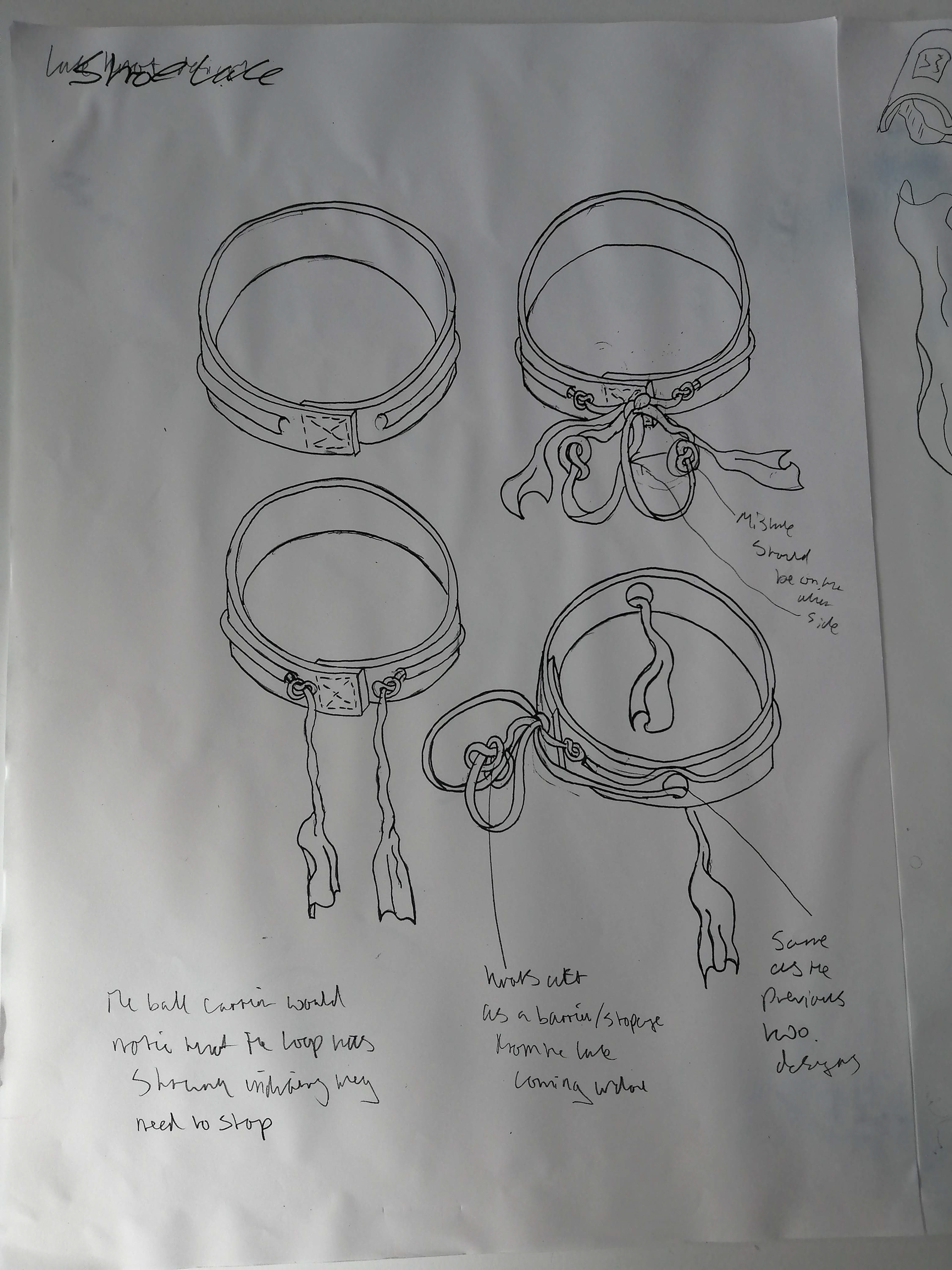
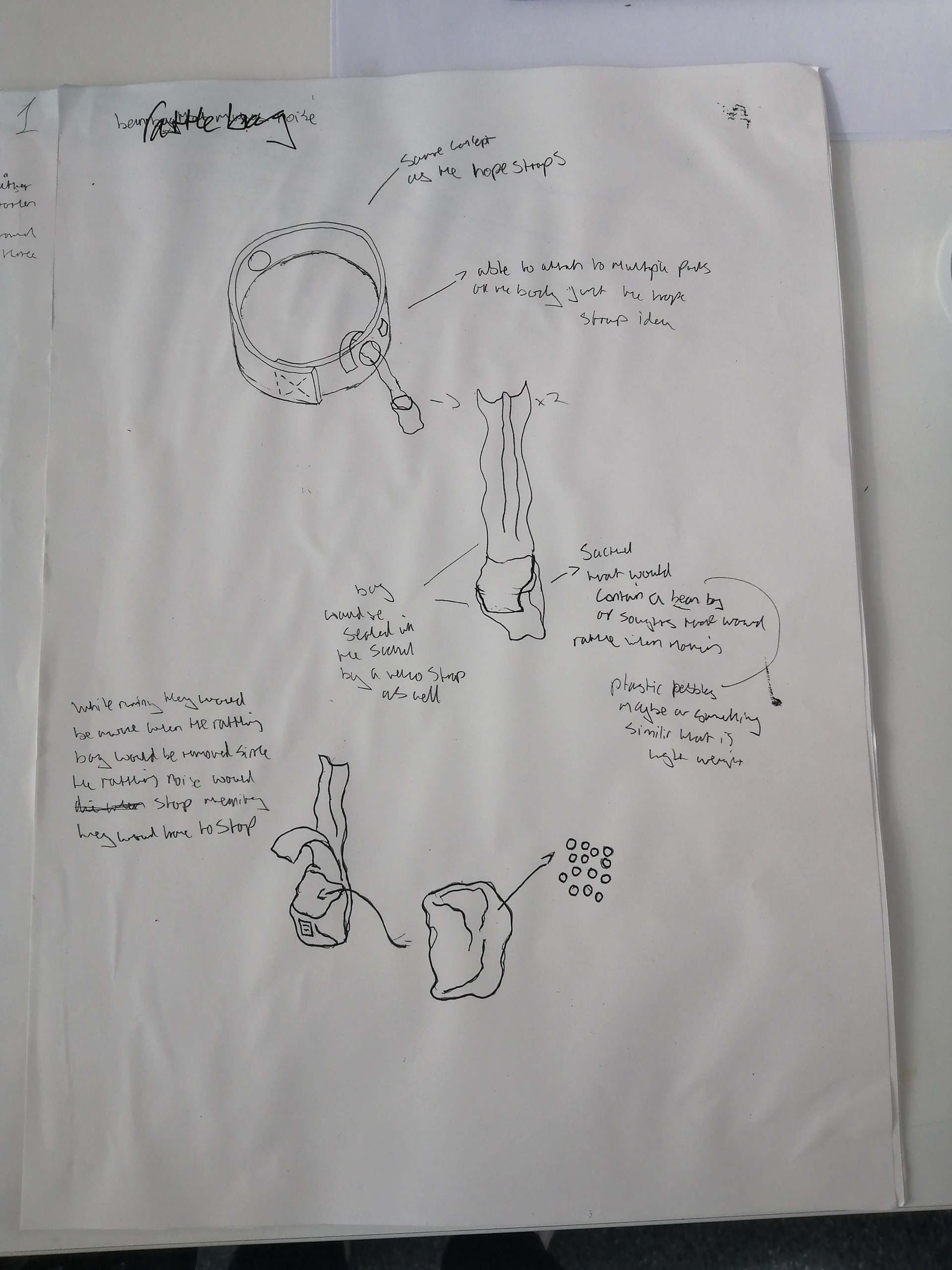
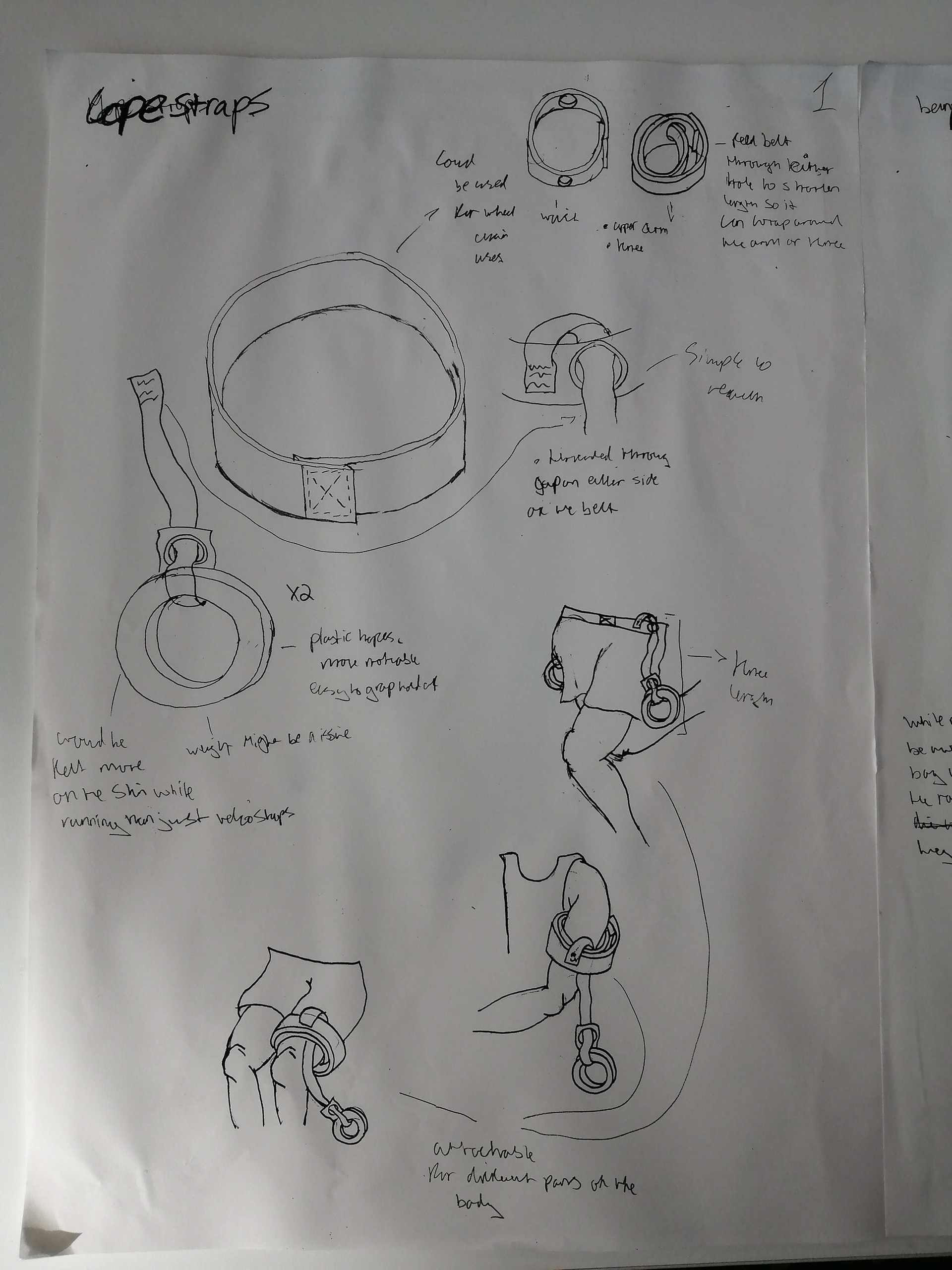

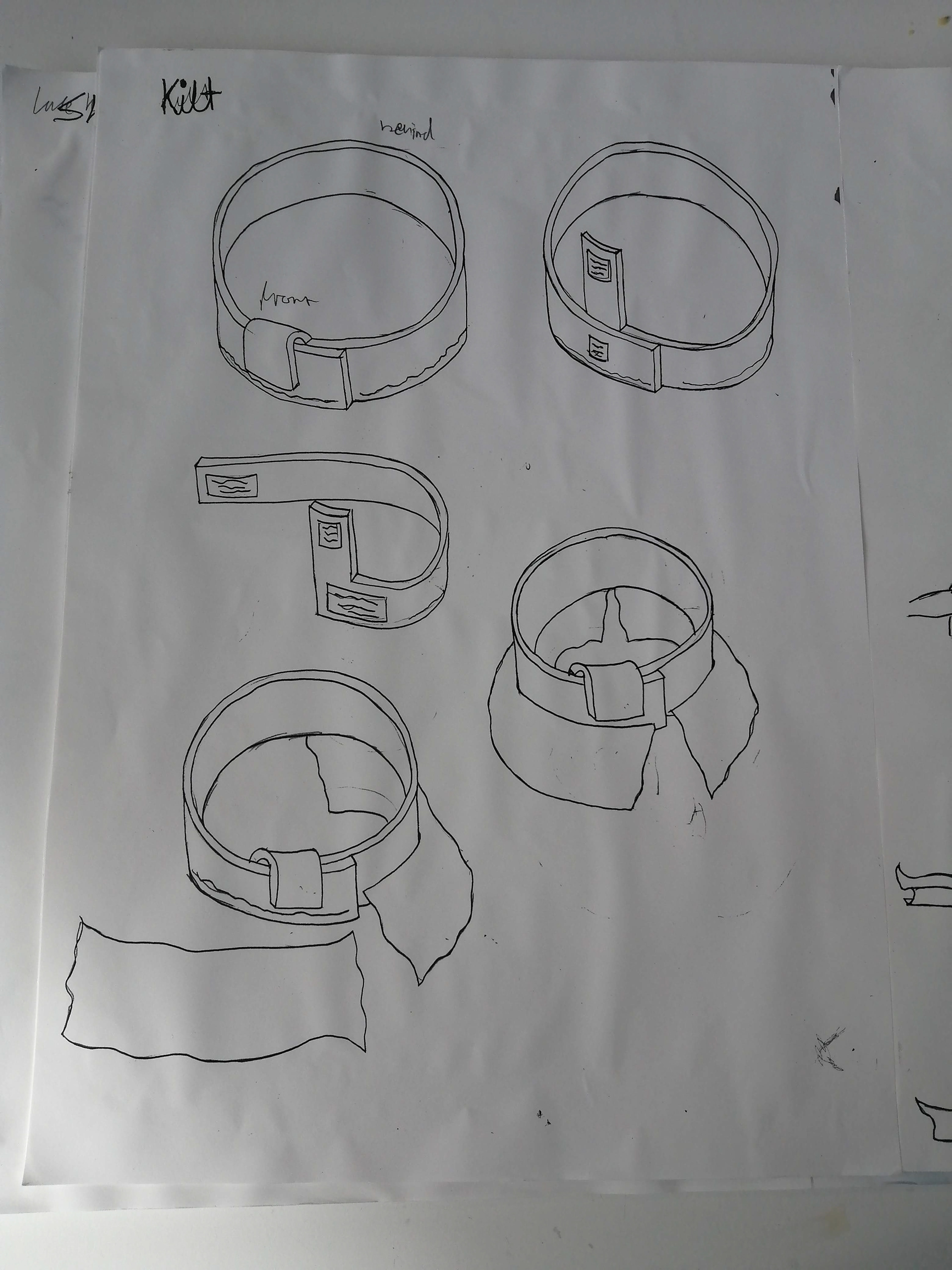

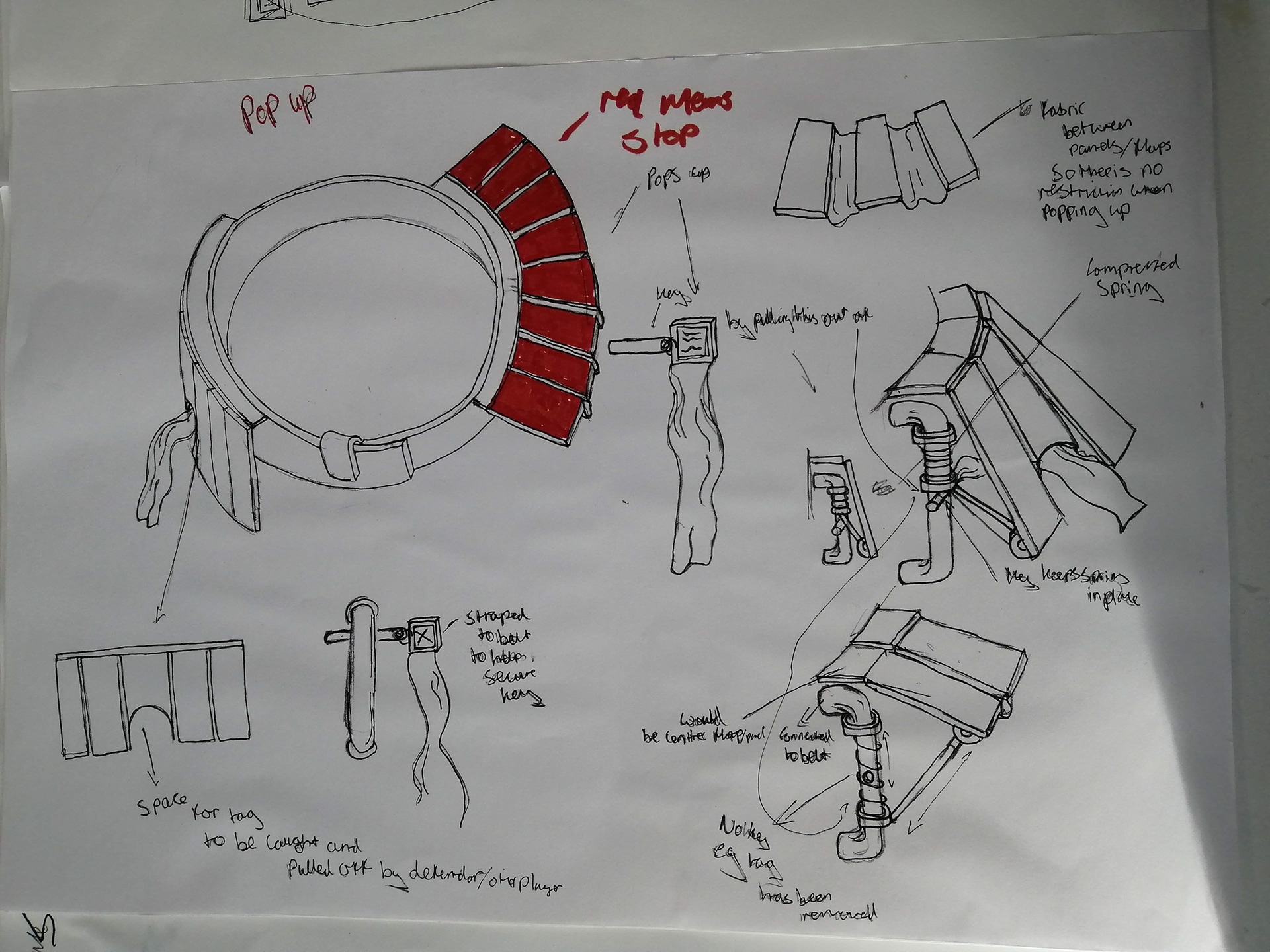
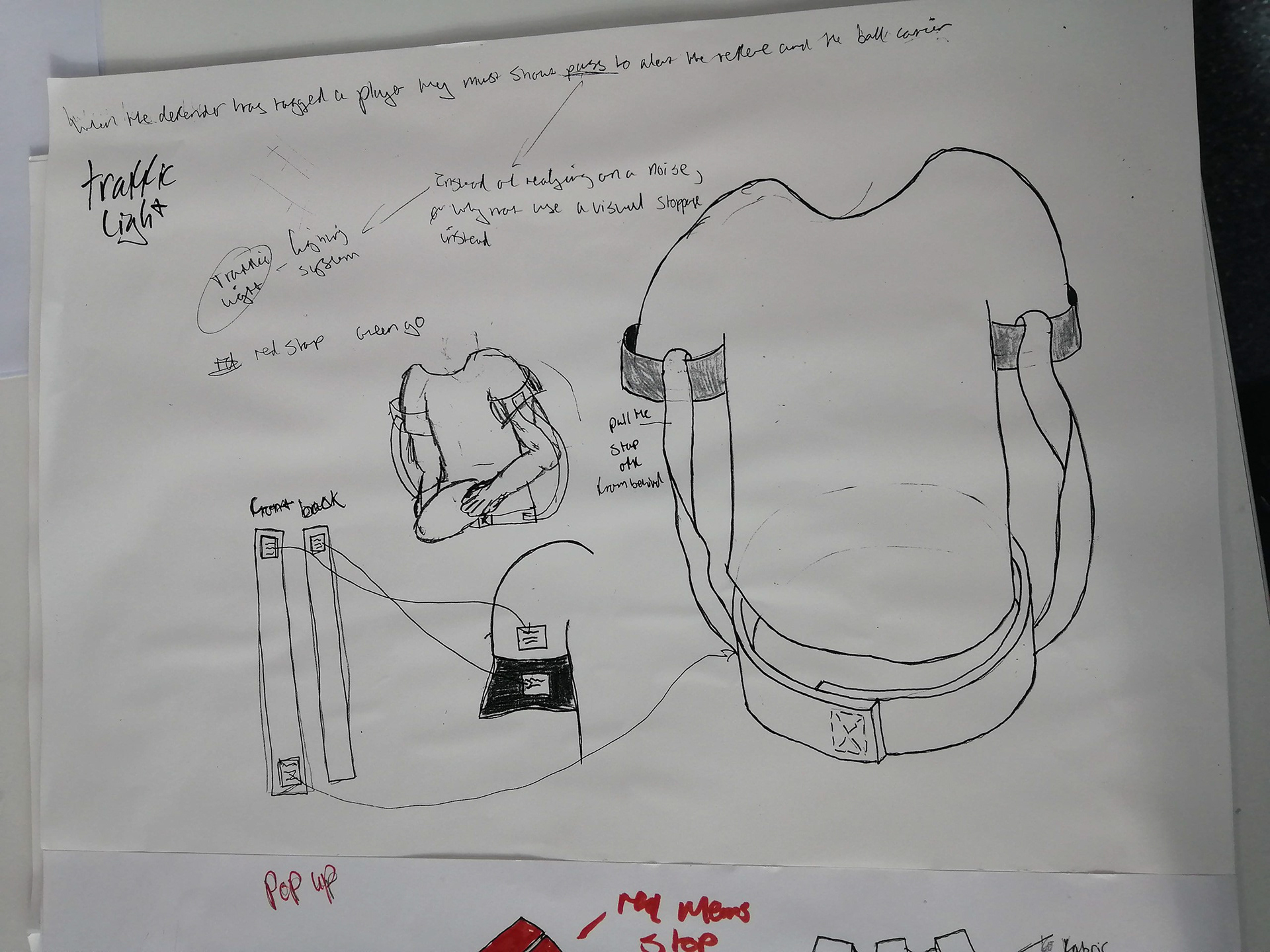

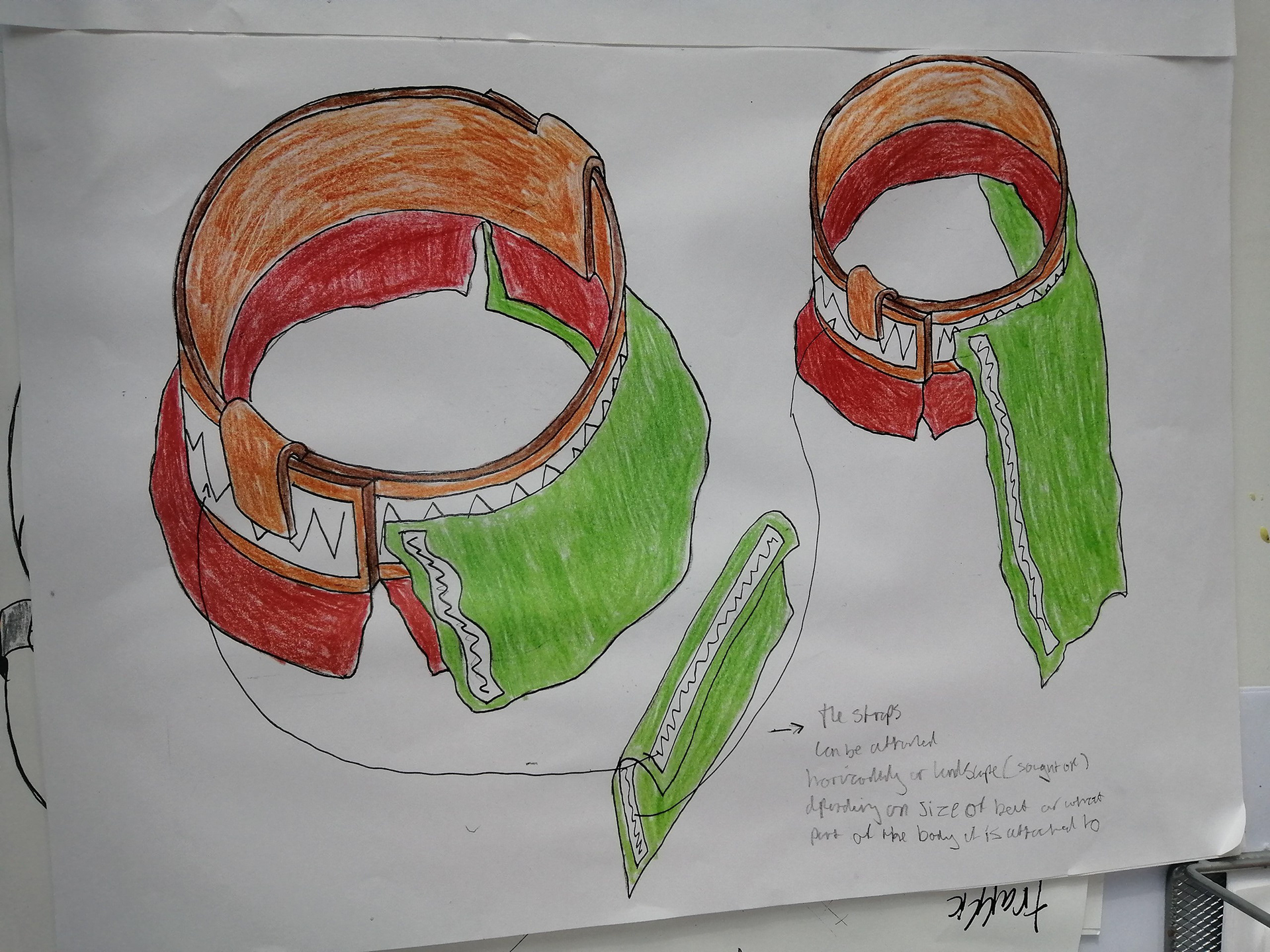






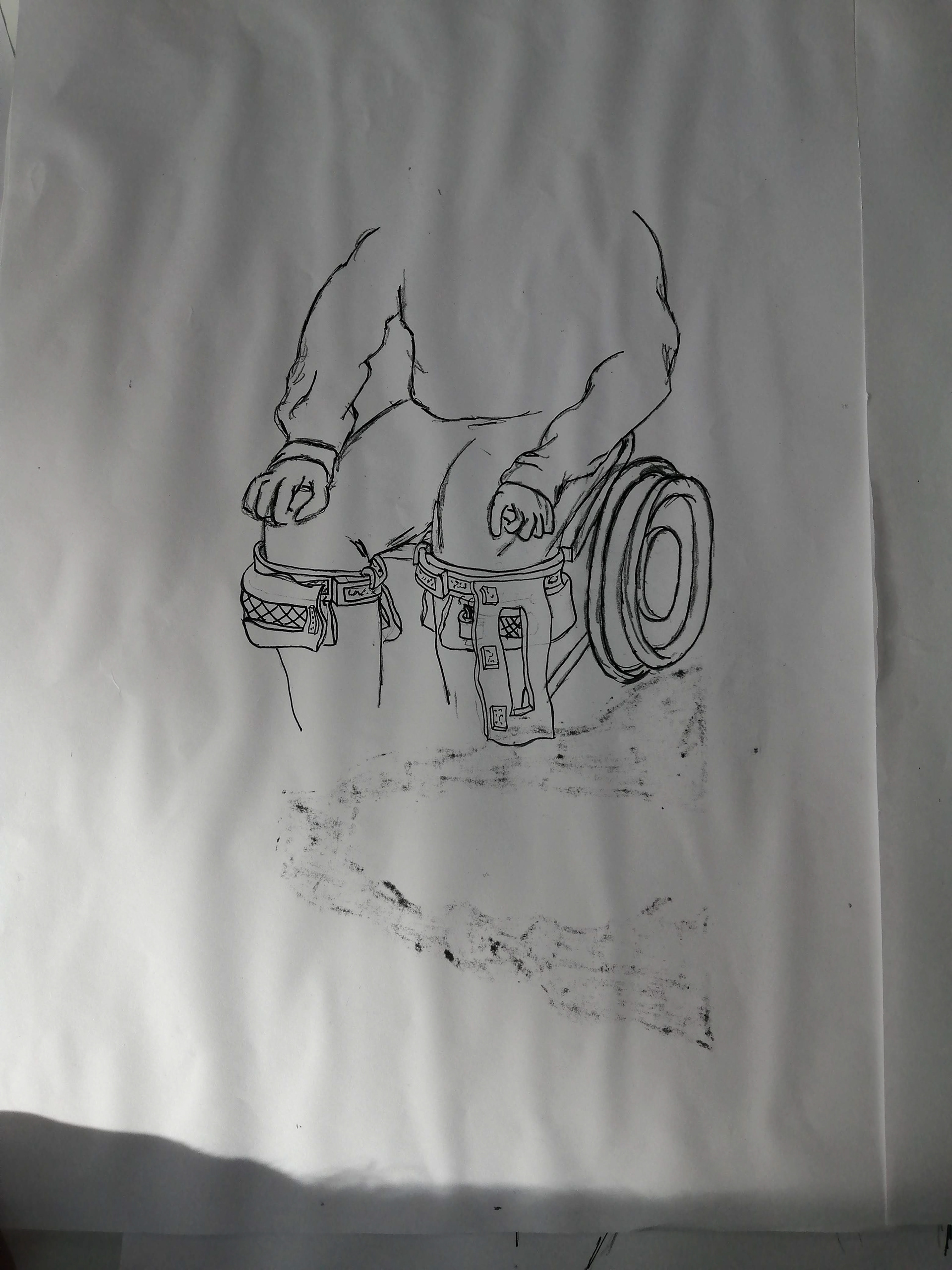
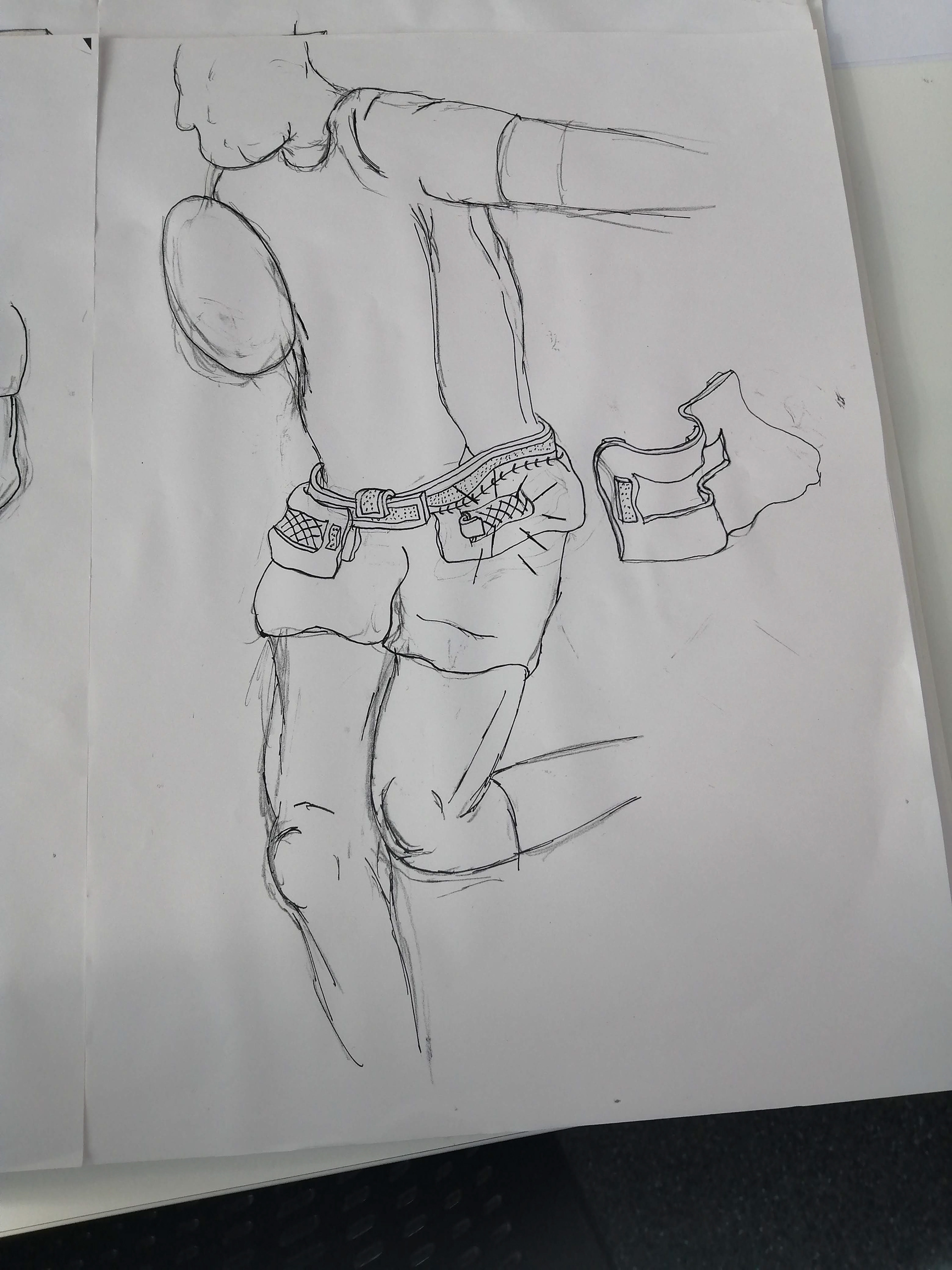



Group work
After the individual proposals were presented to the entire year group we were placed into groups, based on similar ideas and how our ideas could aid each others.
Once placed into my group, me and my associates decided that we wanted to create a product that was primarily visual sensory, easy to maintain, not expensive and able to be used by many mixed ability children as possible. We wanted to develop a product that was completely different from the existing tag belts such as its shape, form and its location on the body.
group development
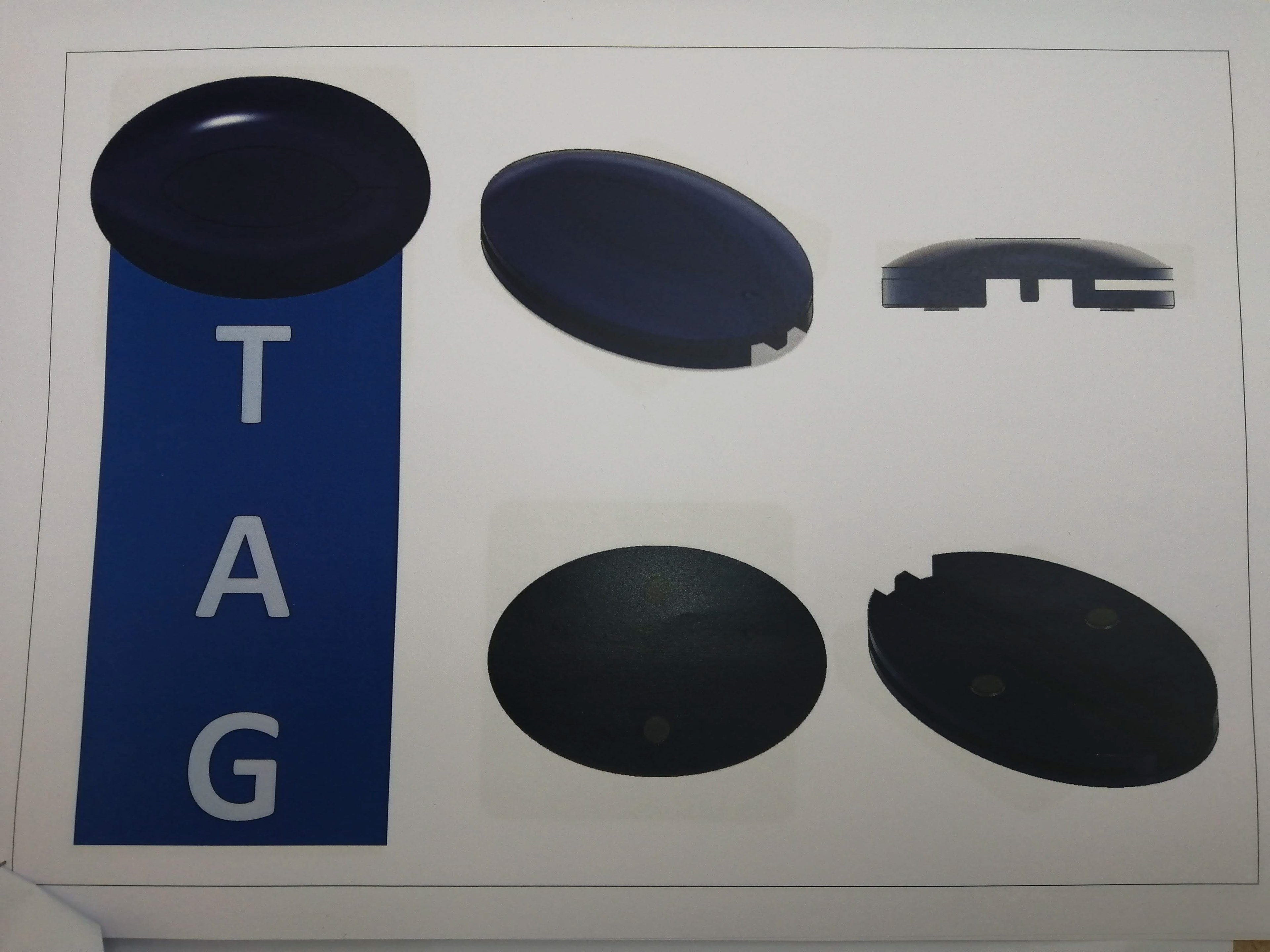
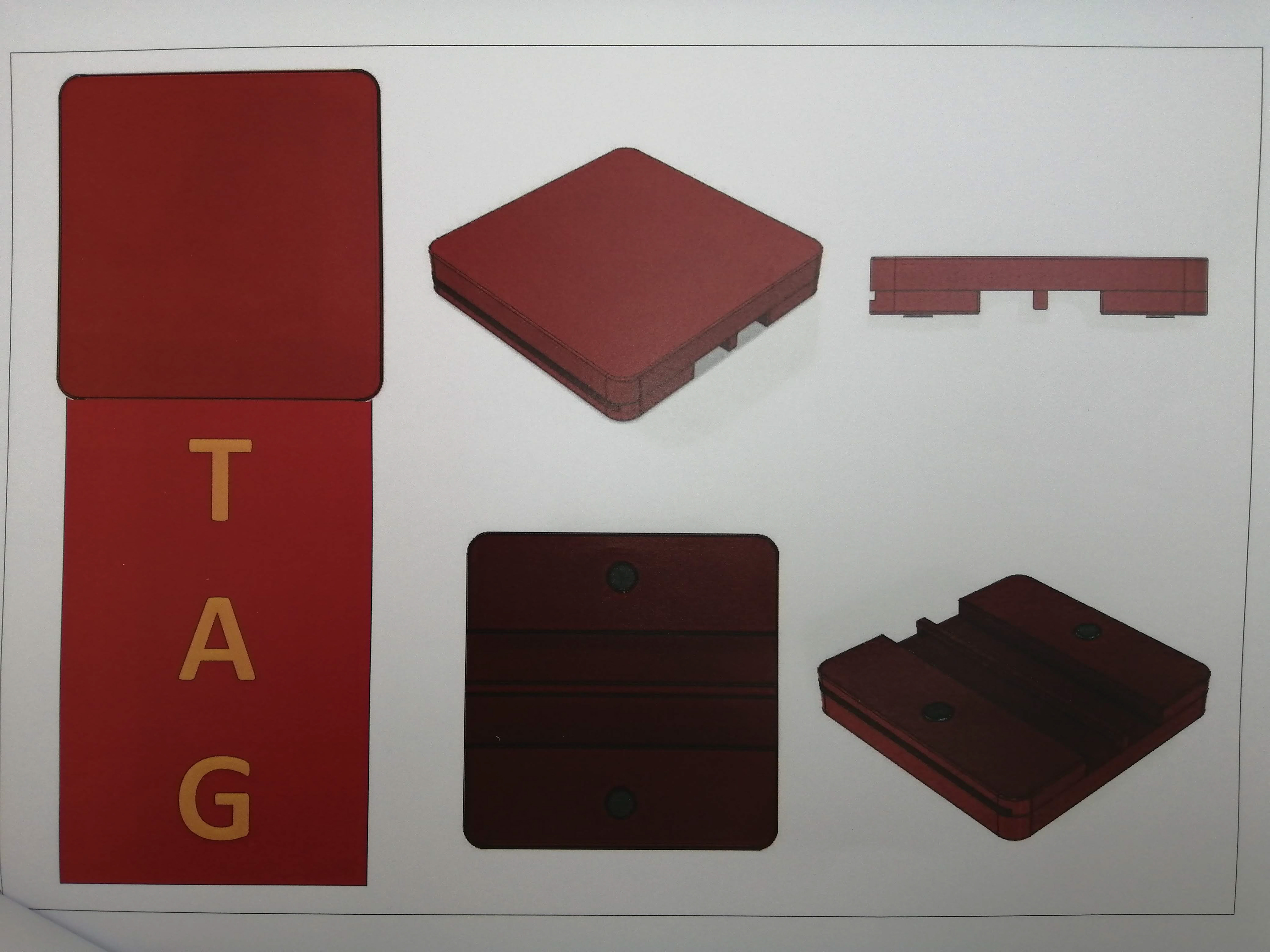

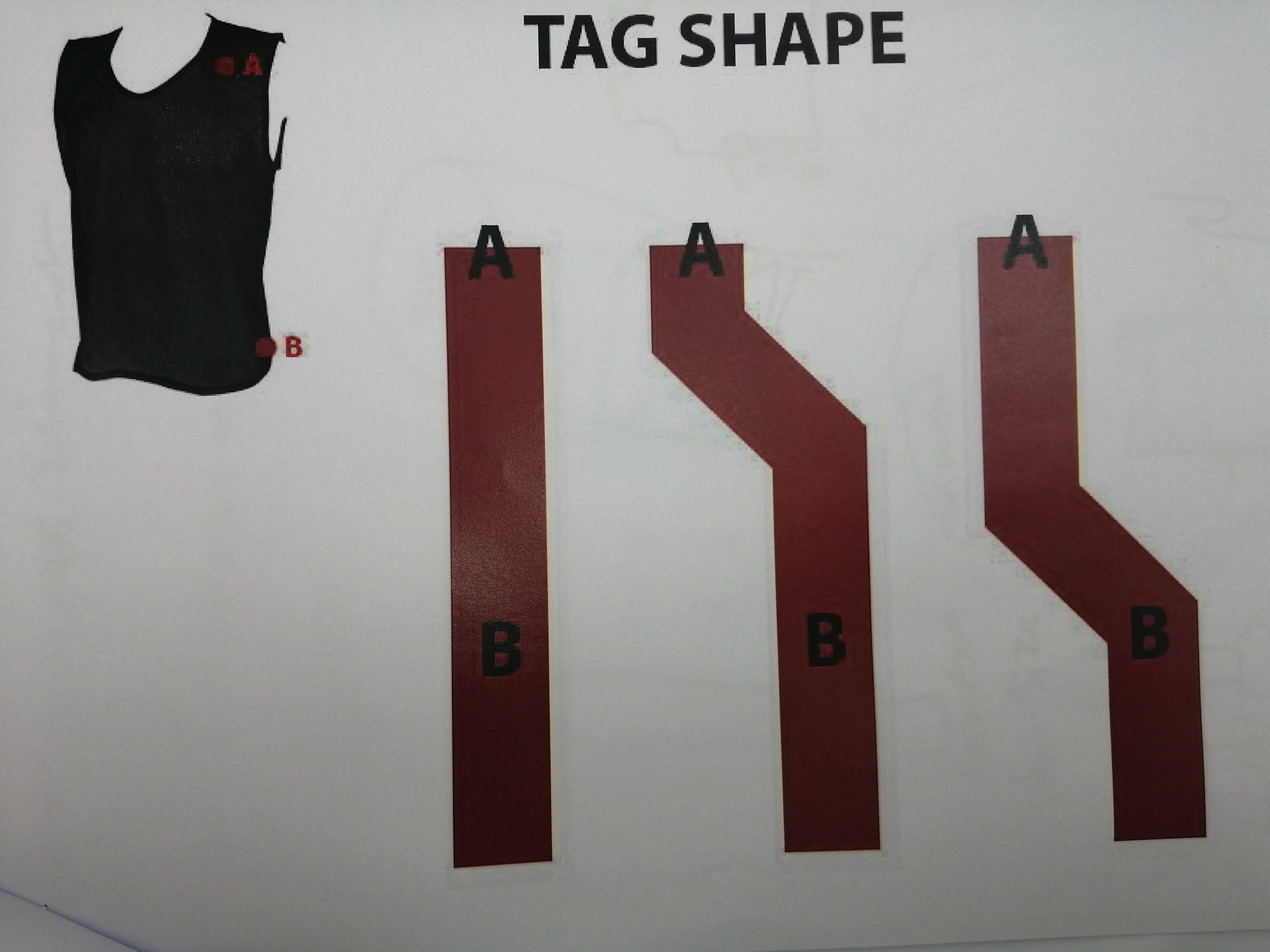
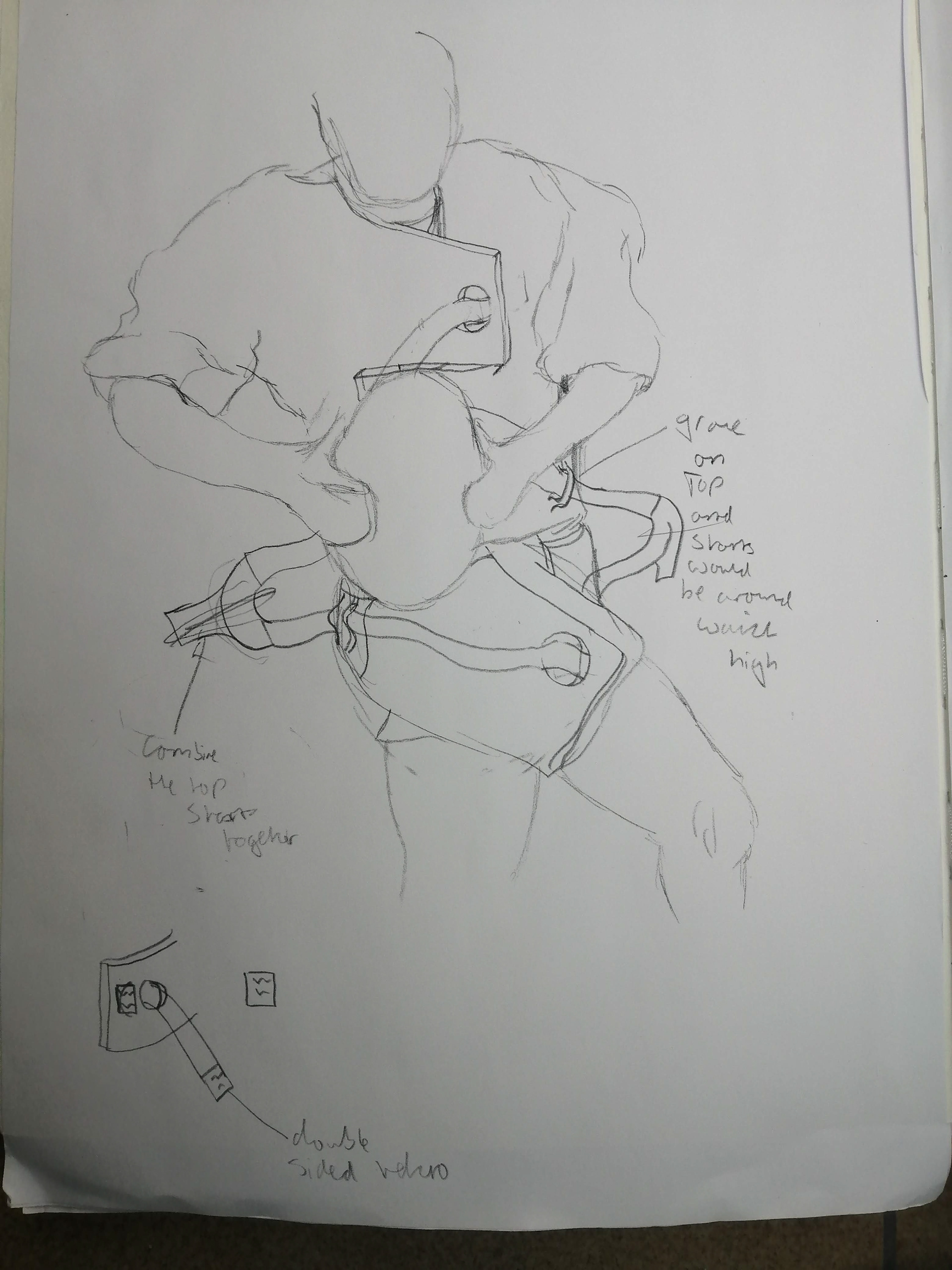


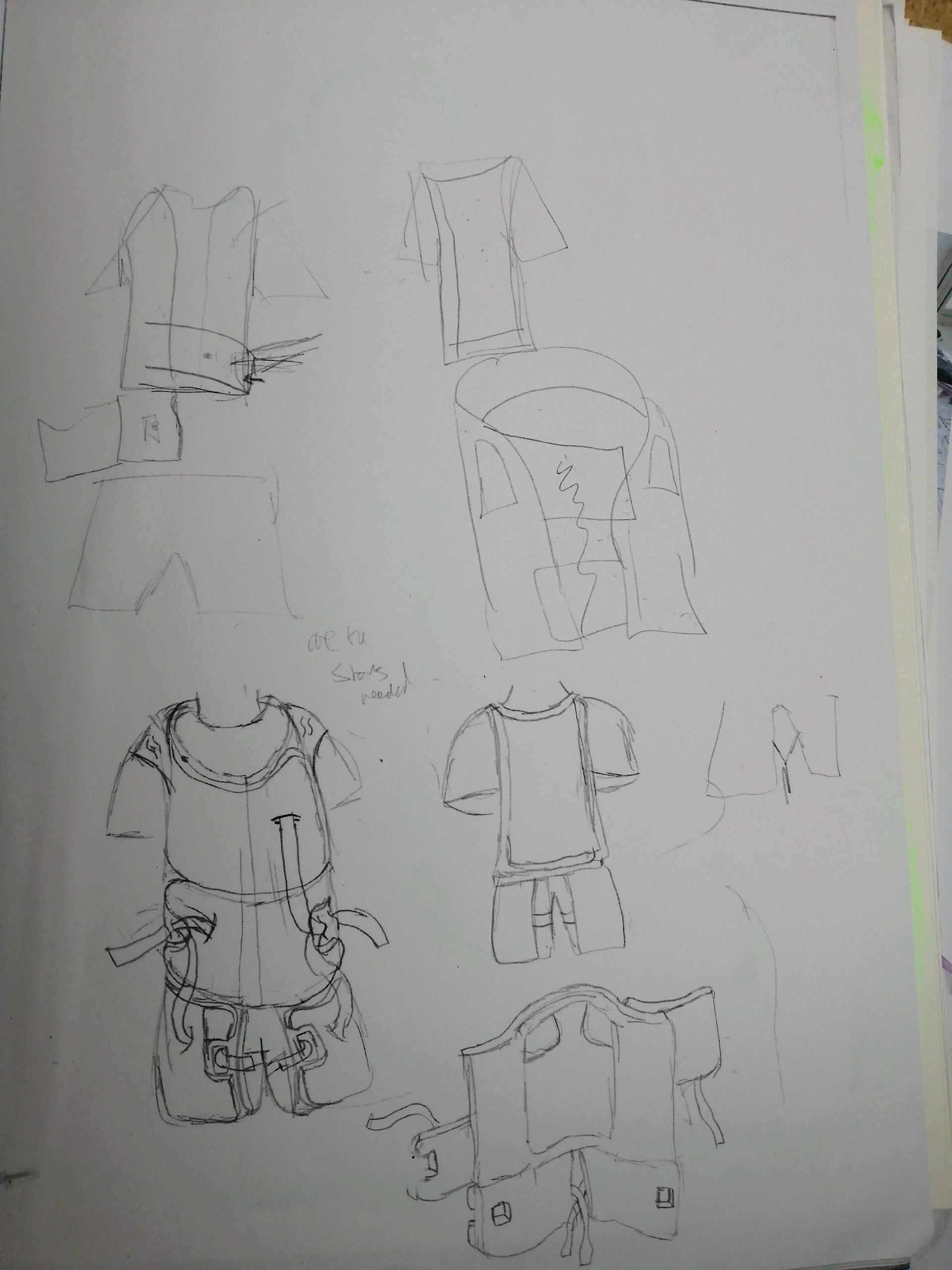
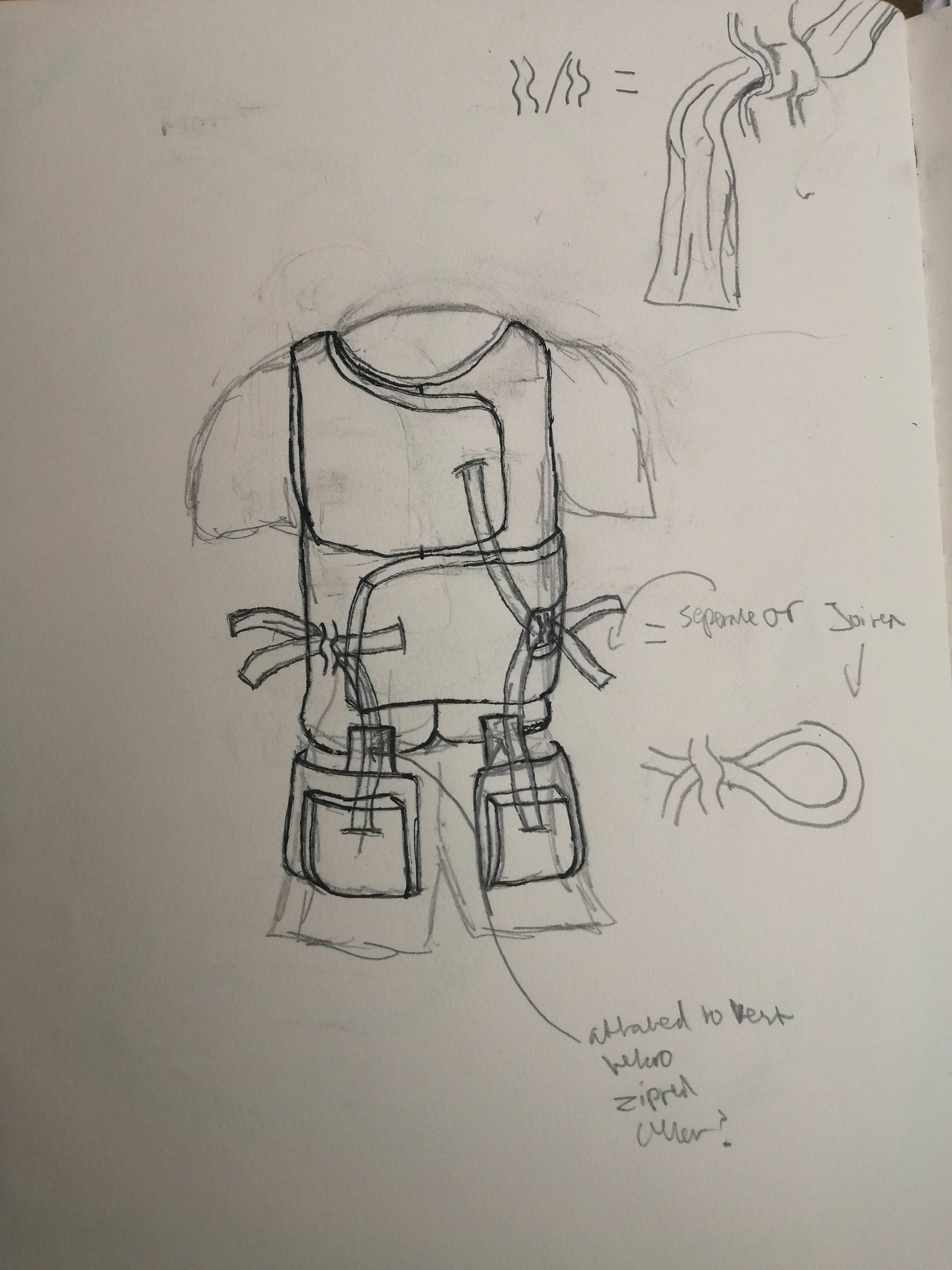
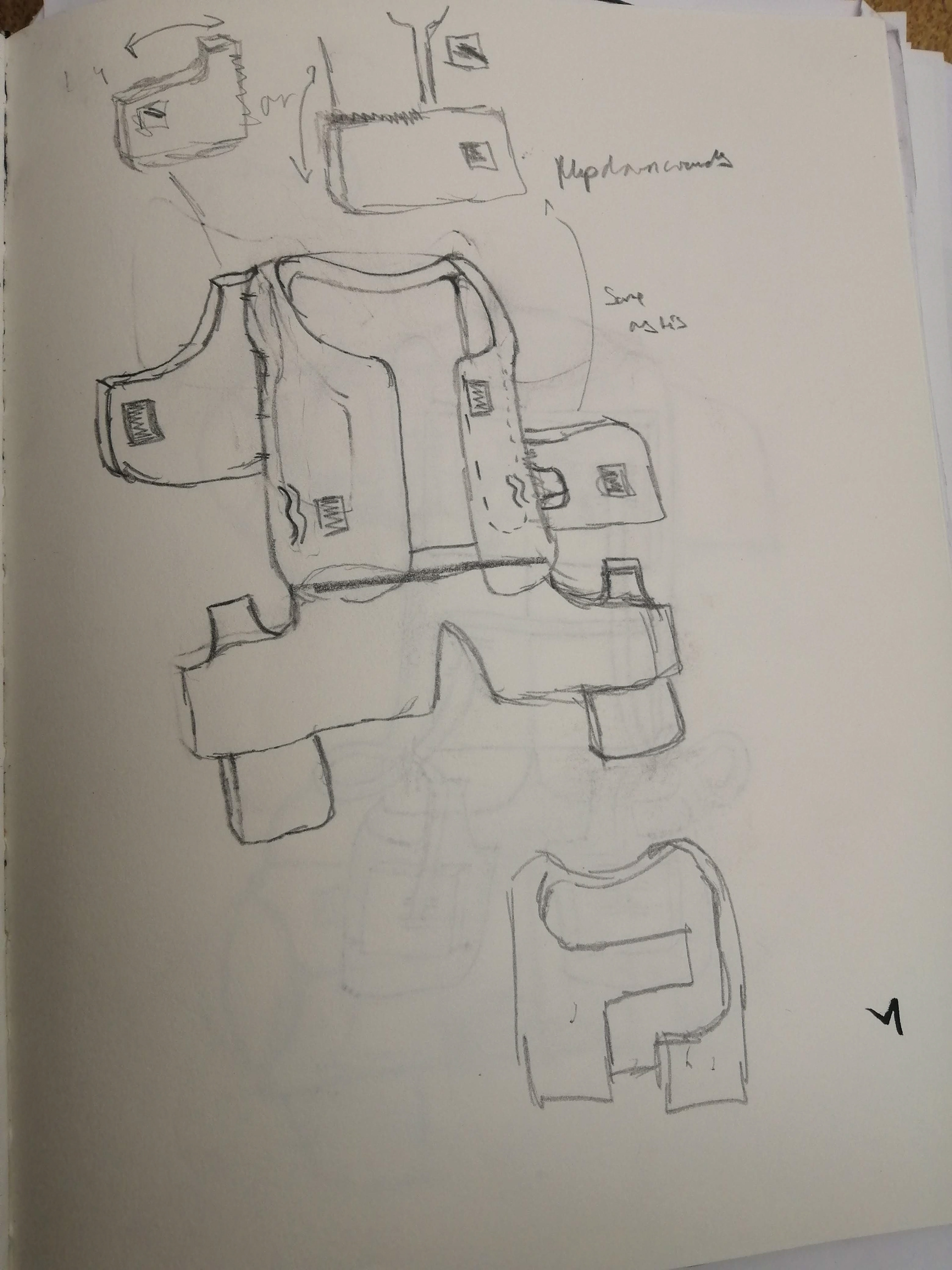

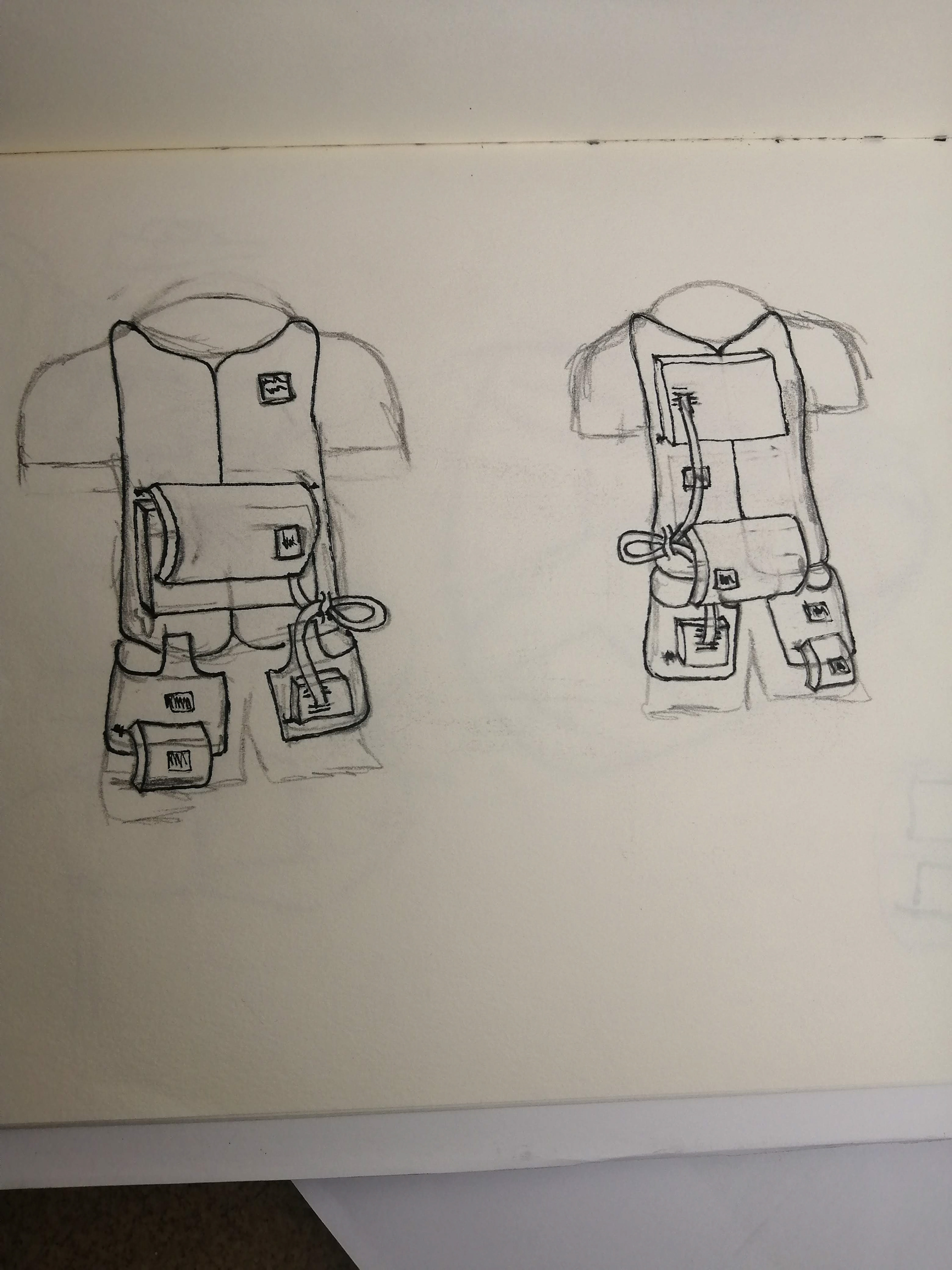
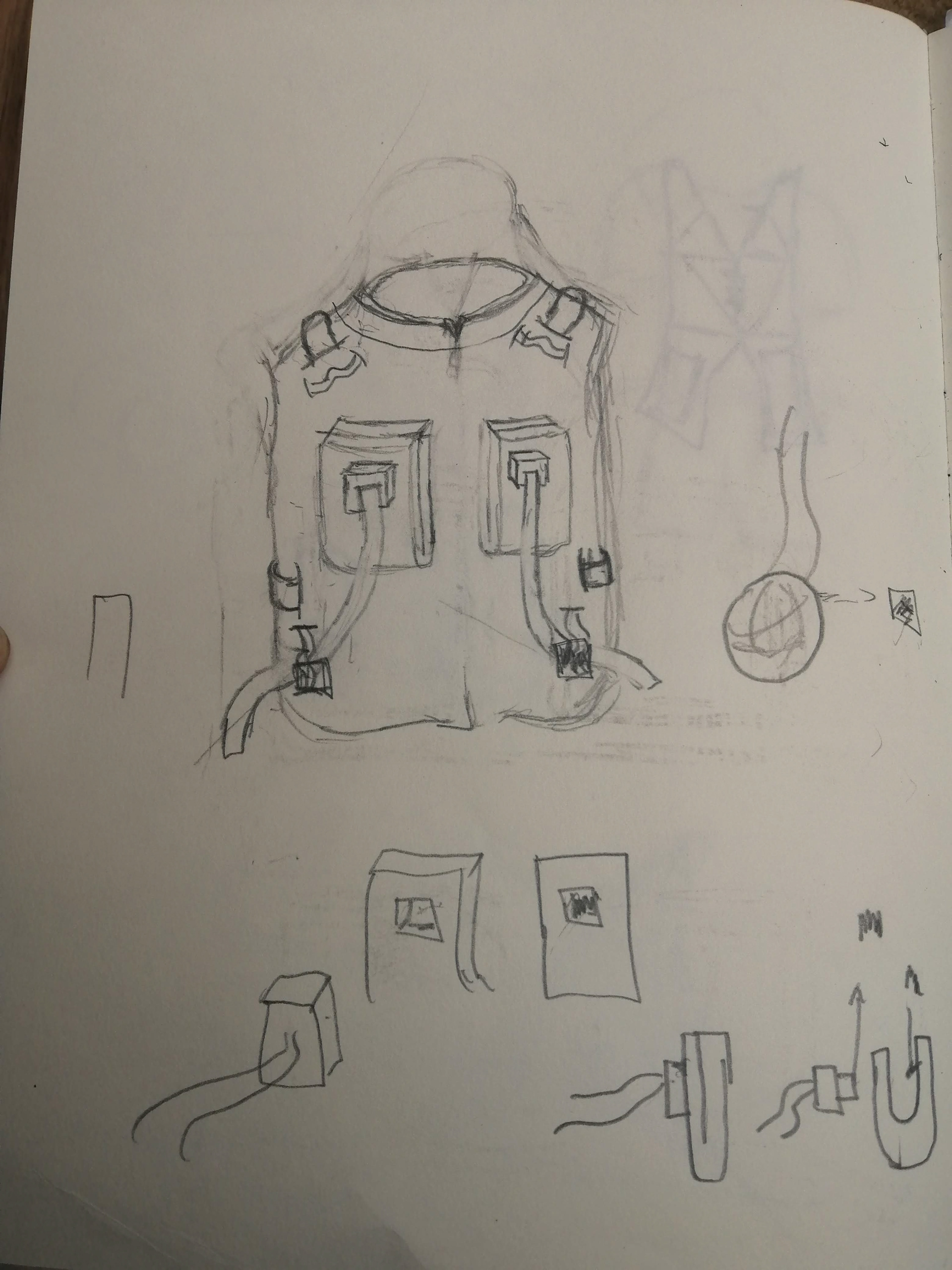
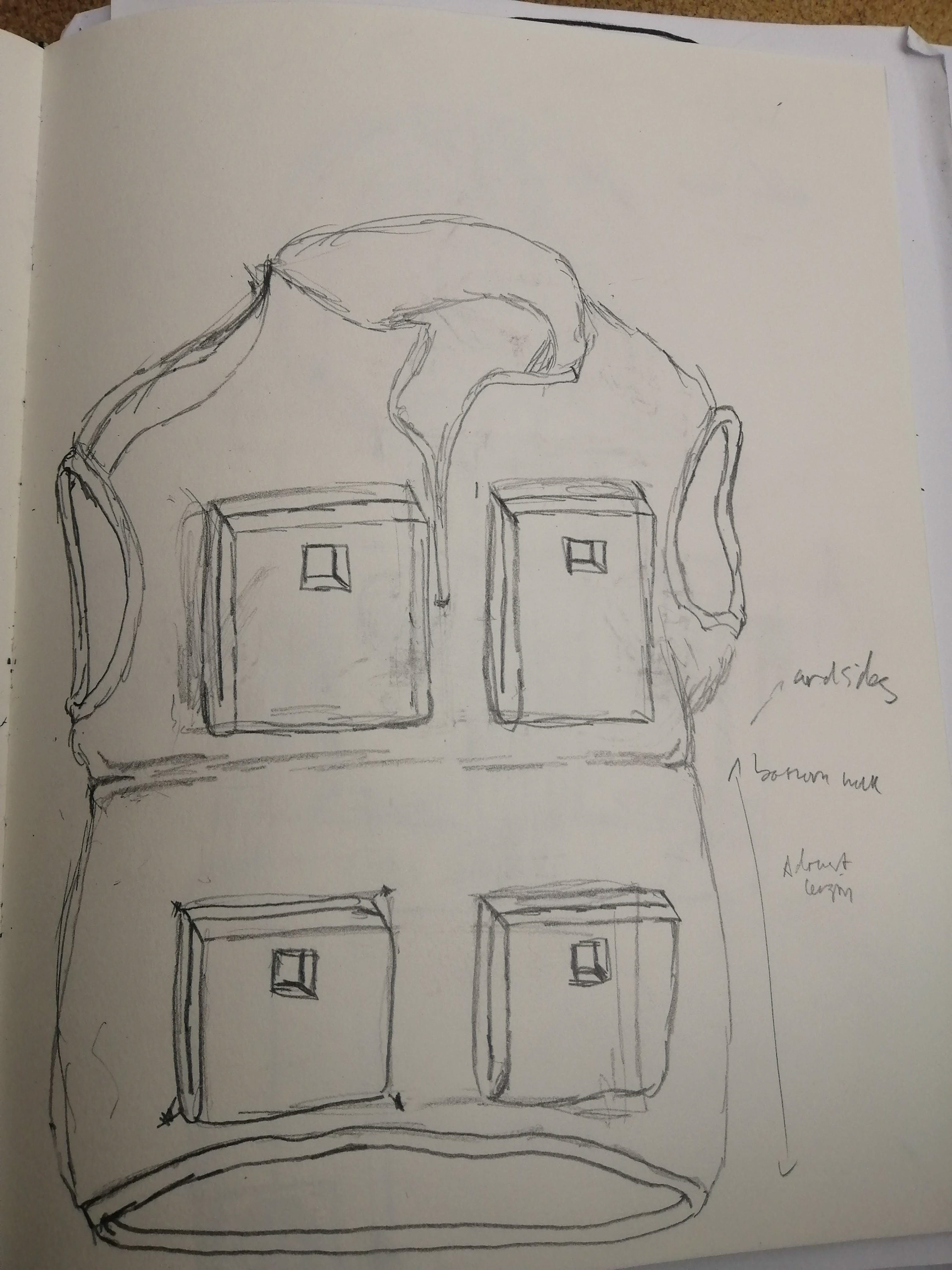
progression
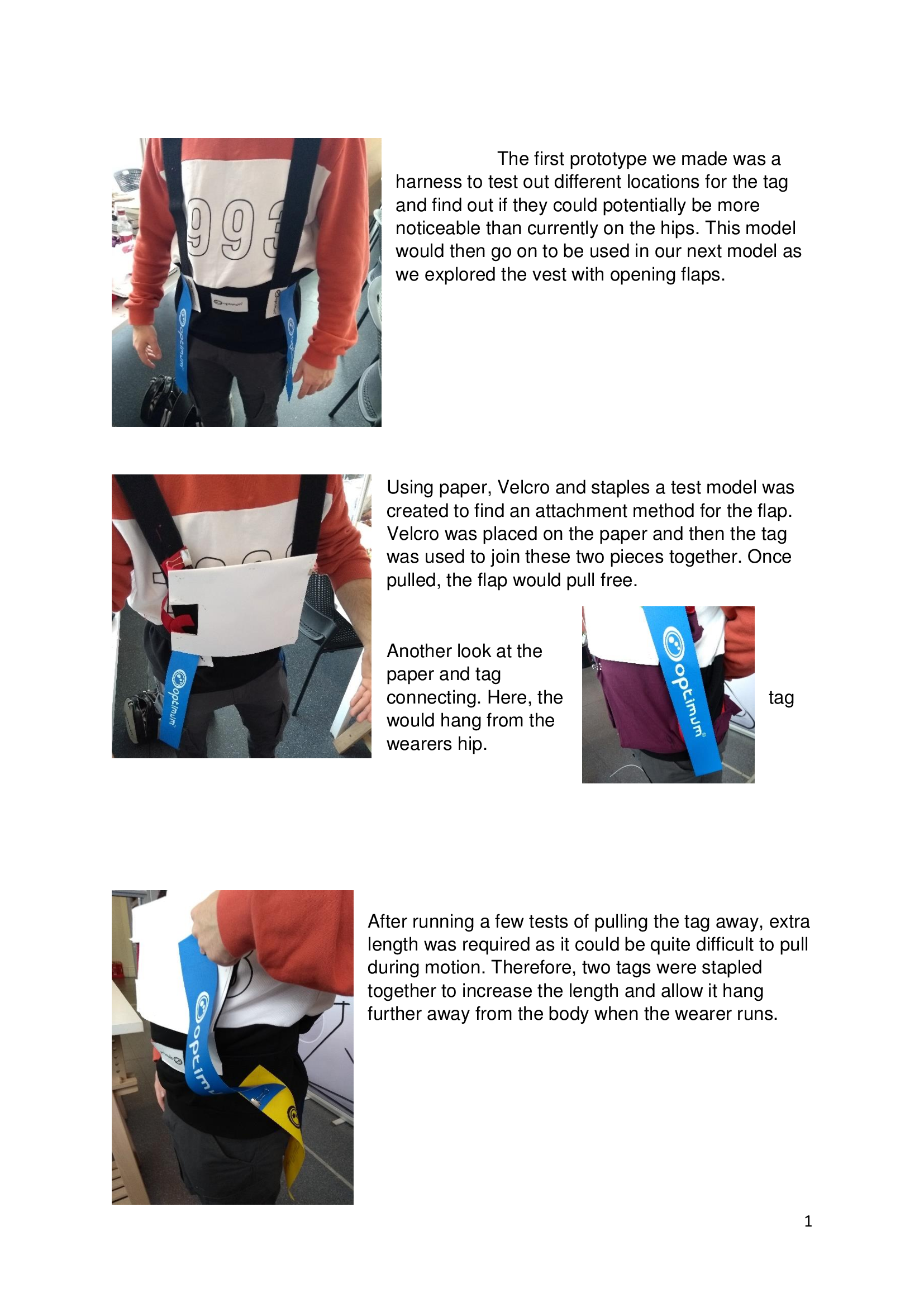
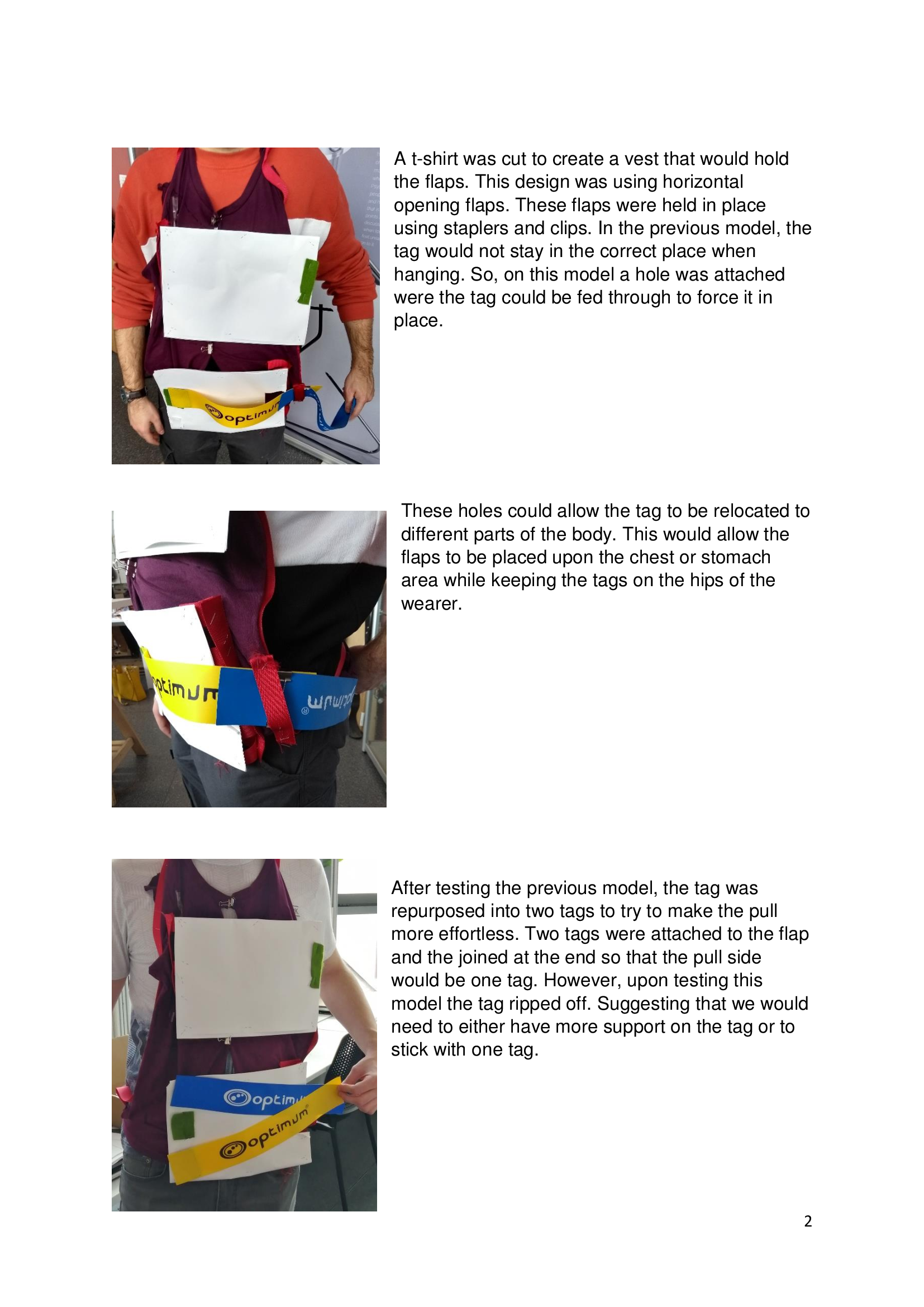
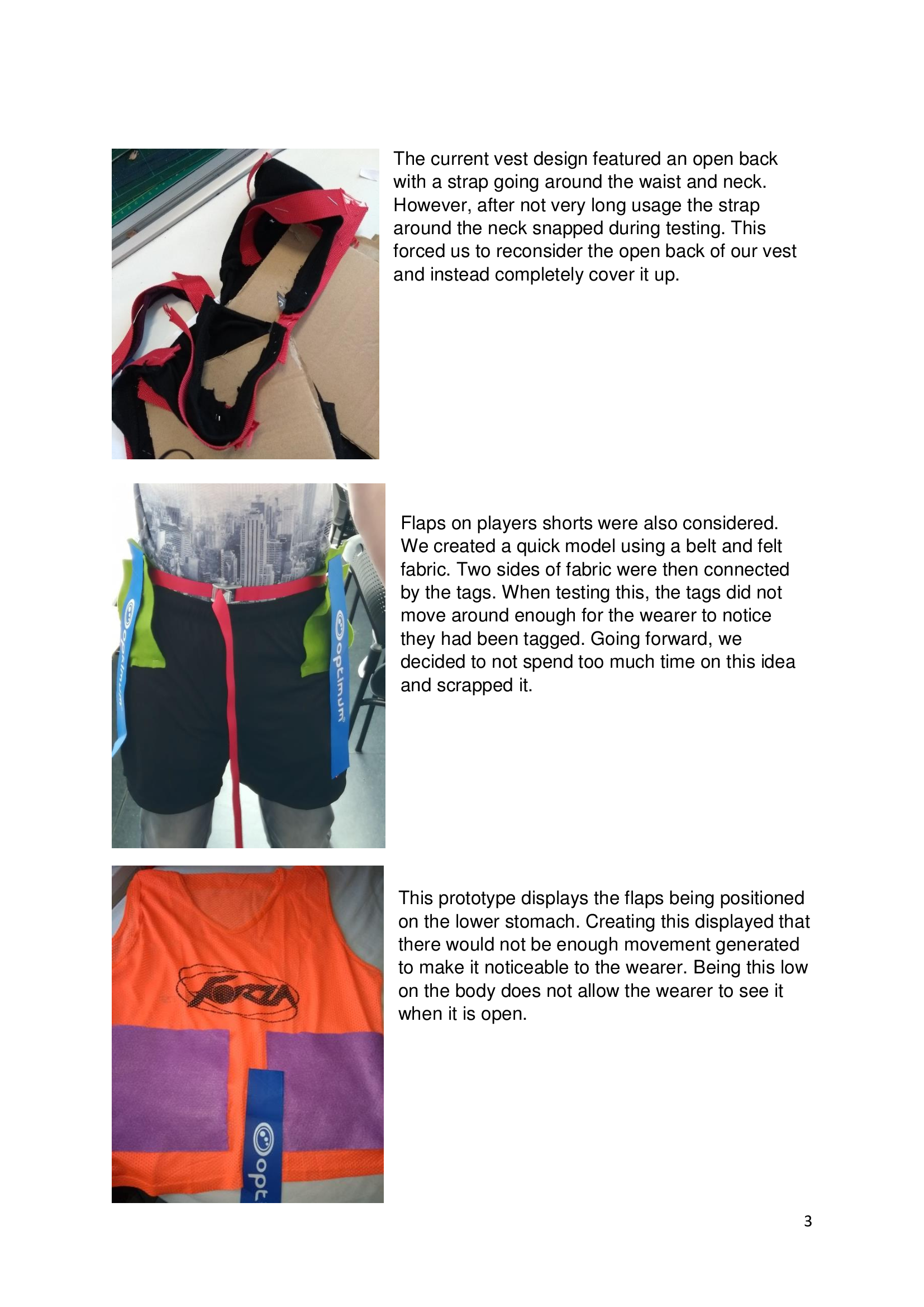
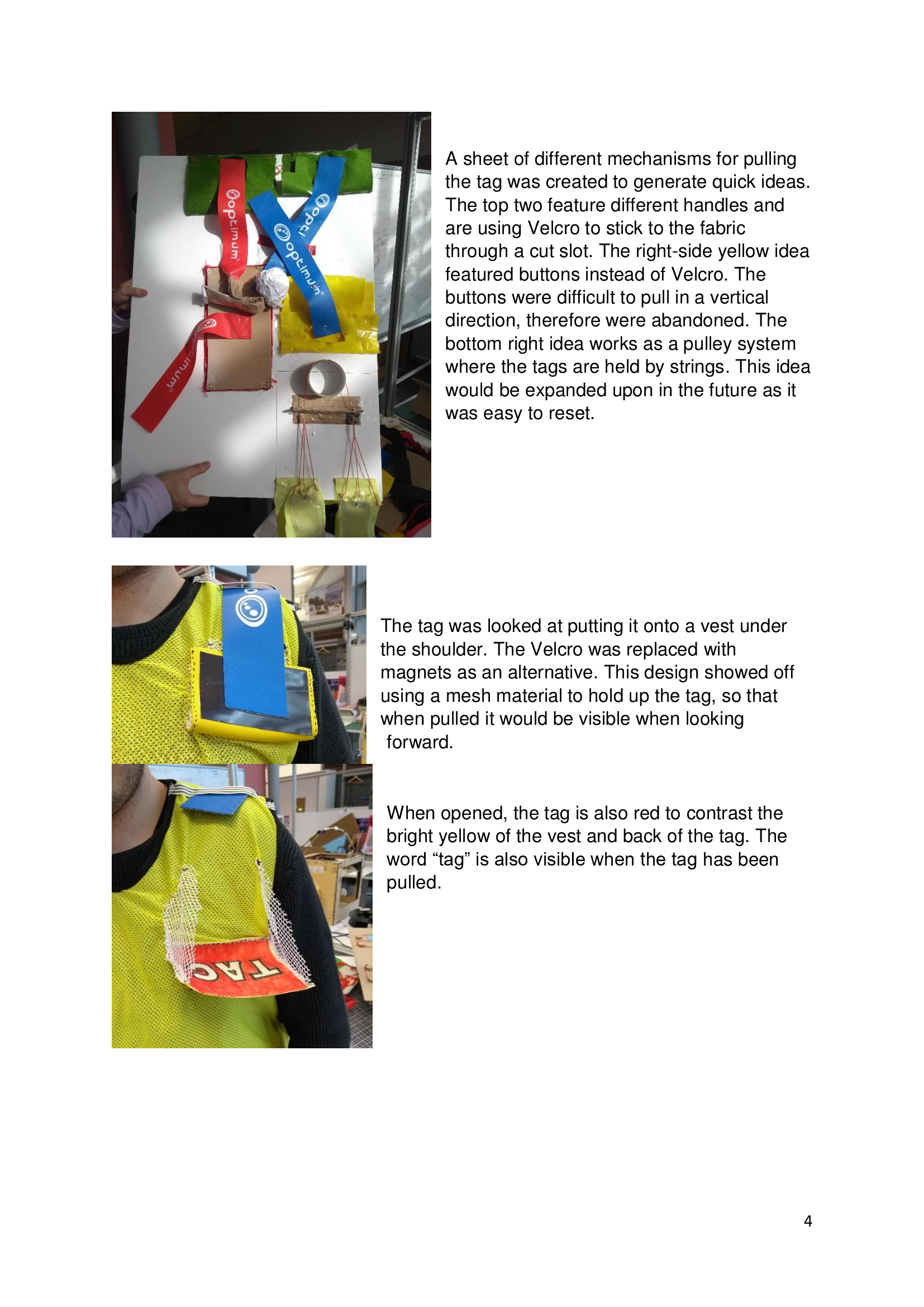
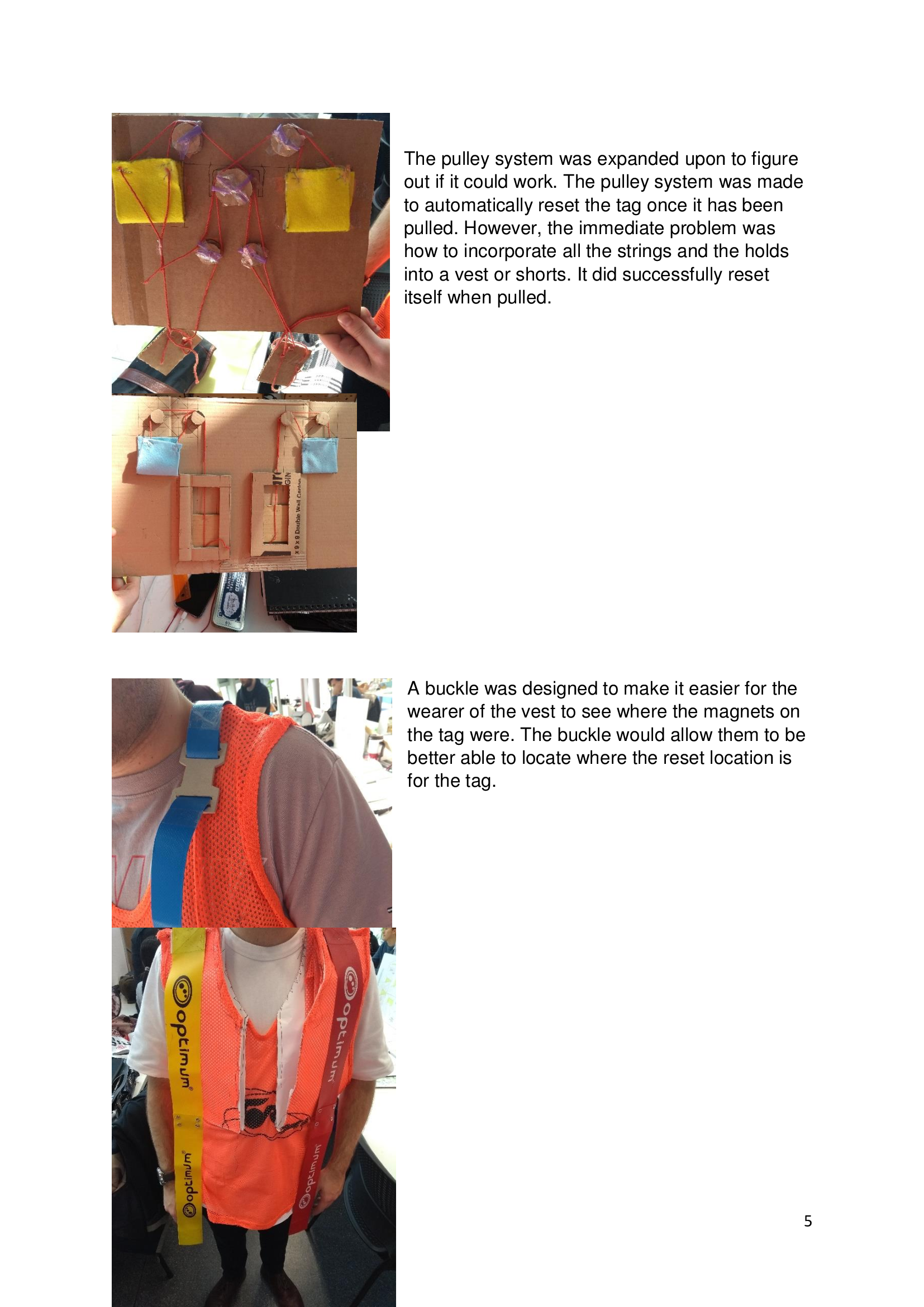
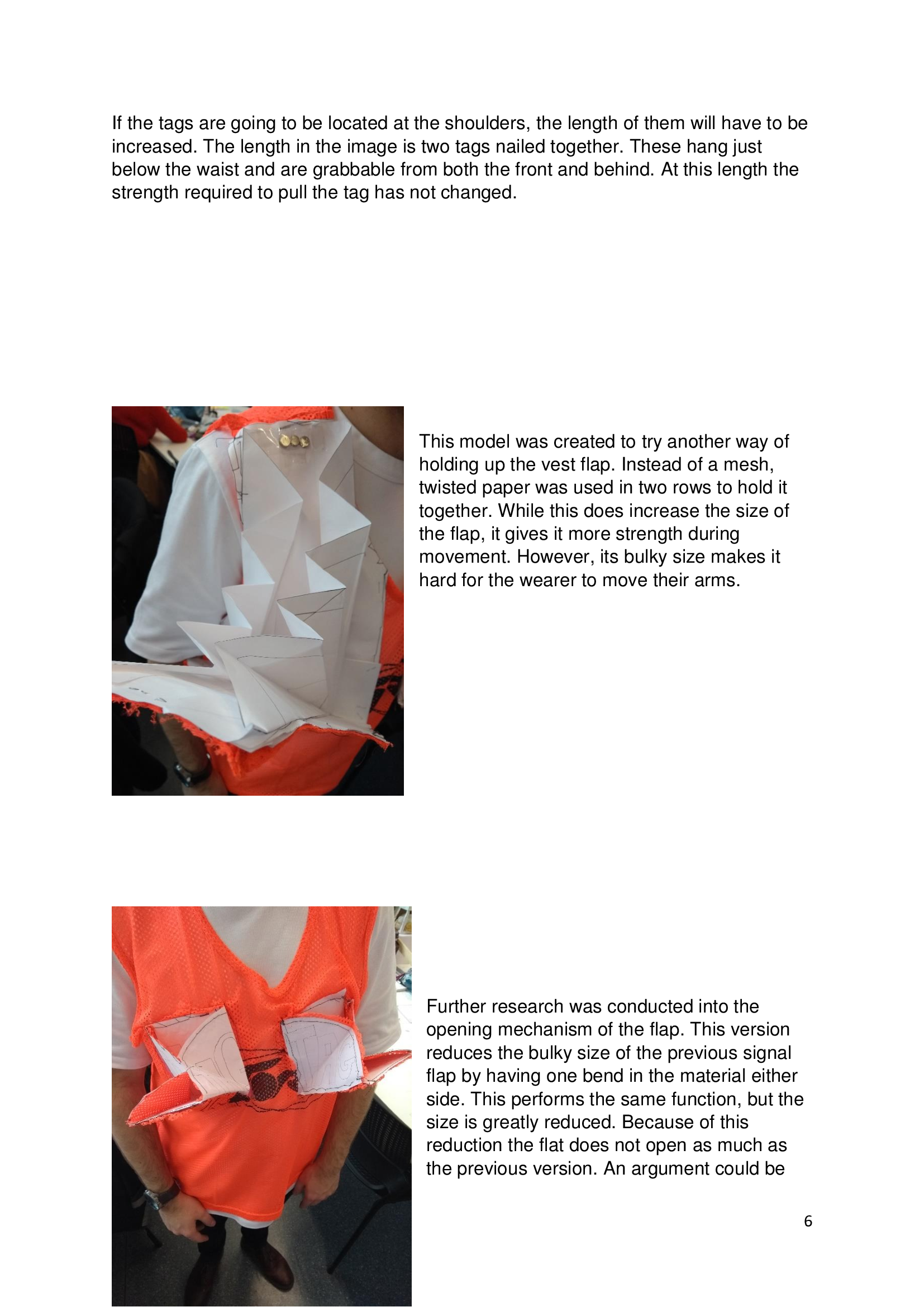
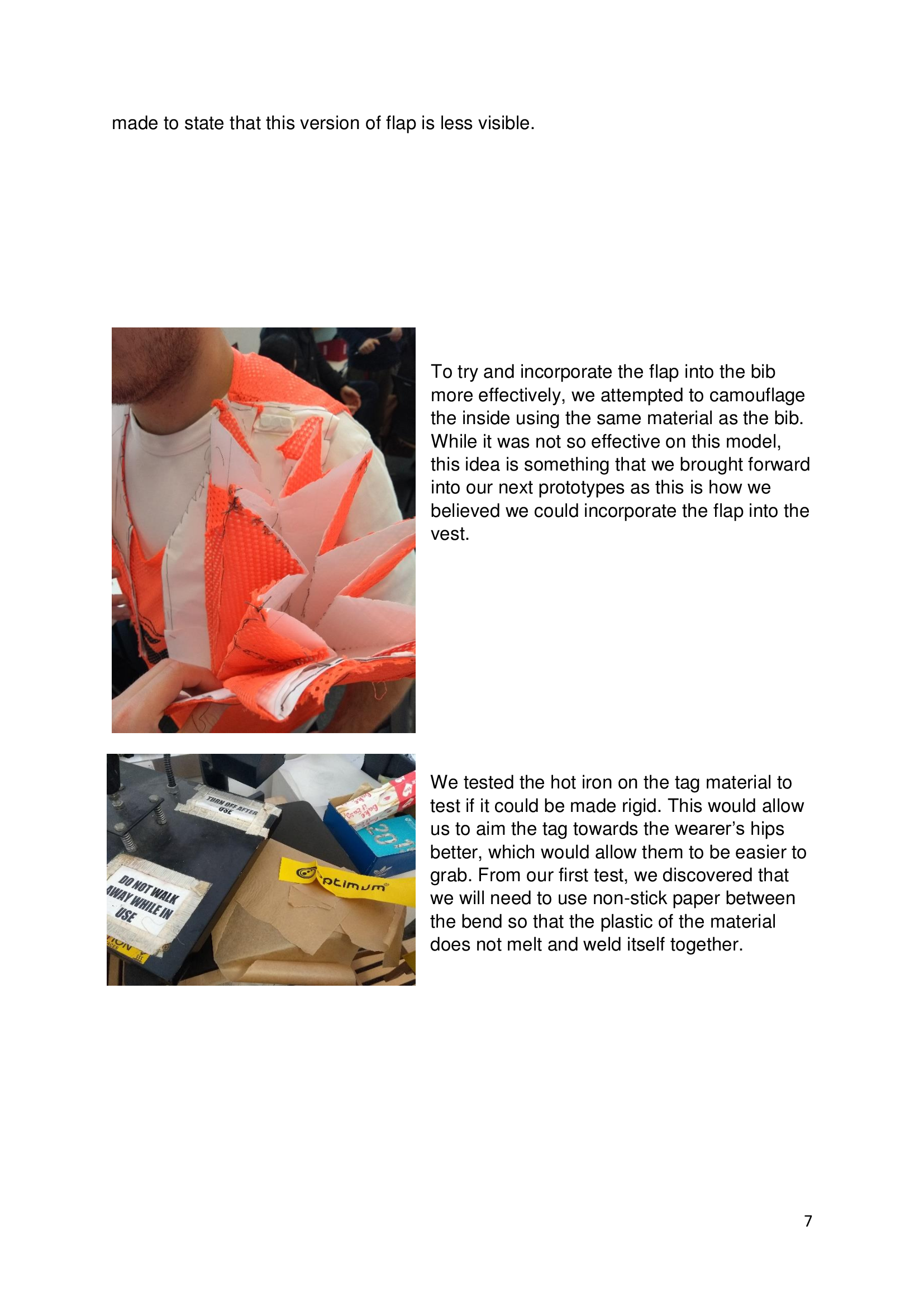

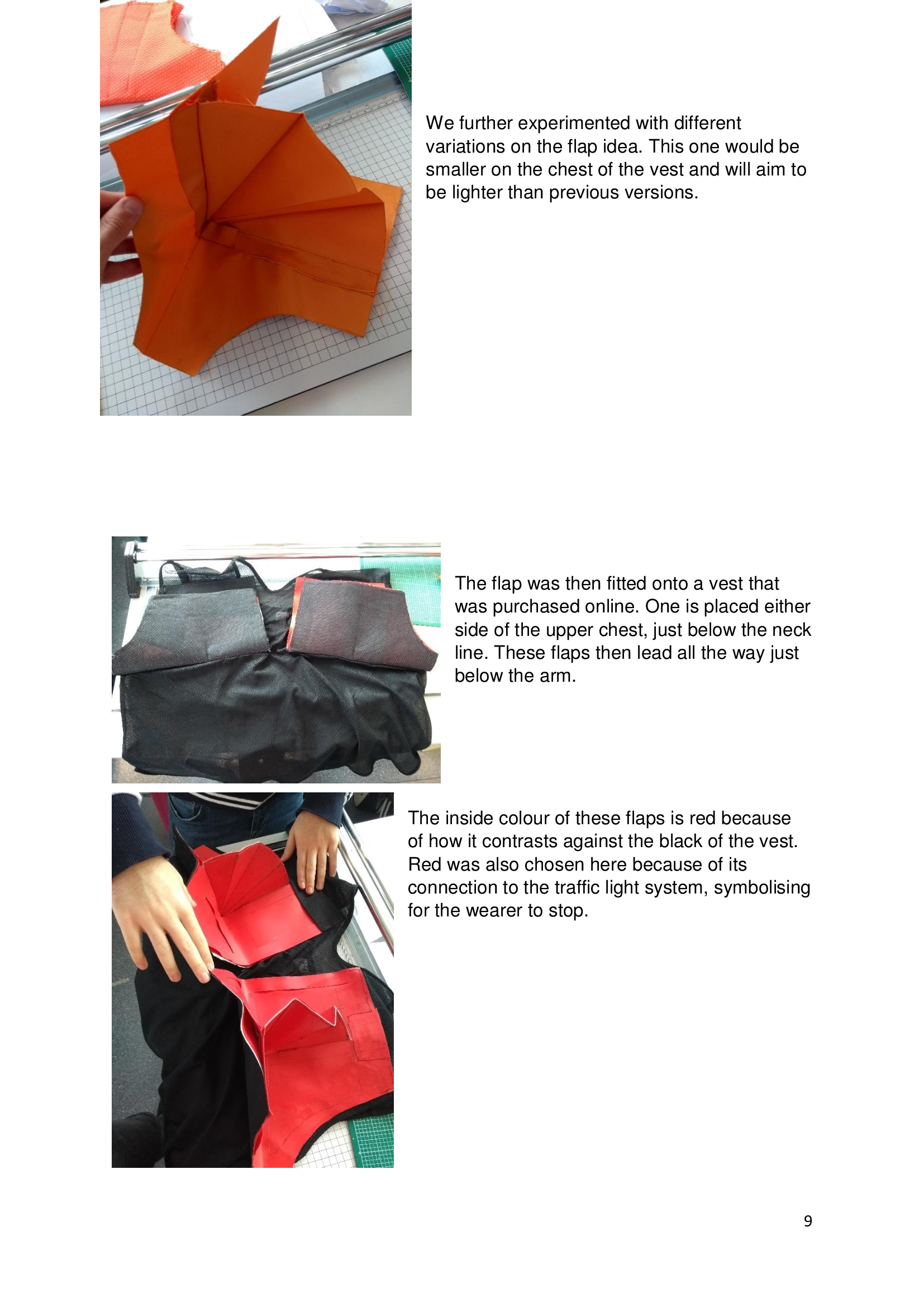
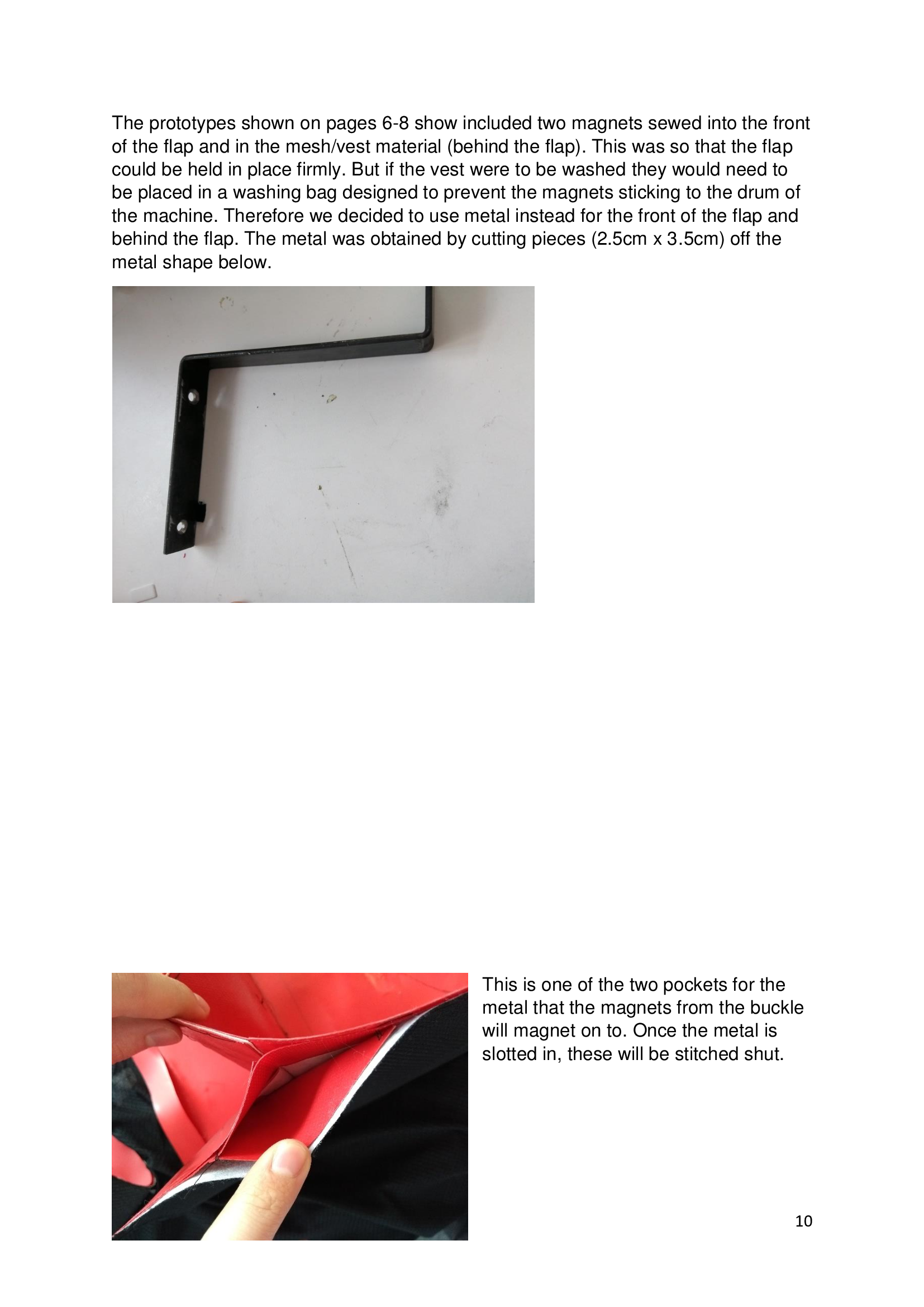
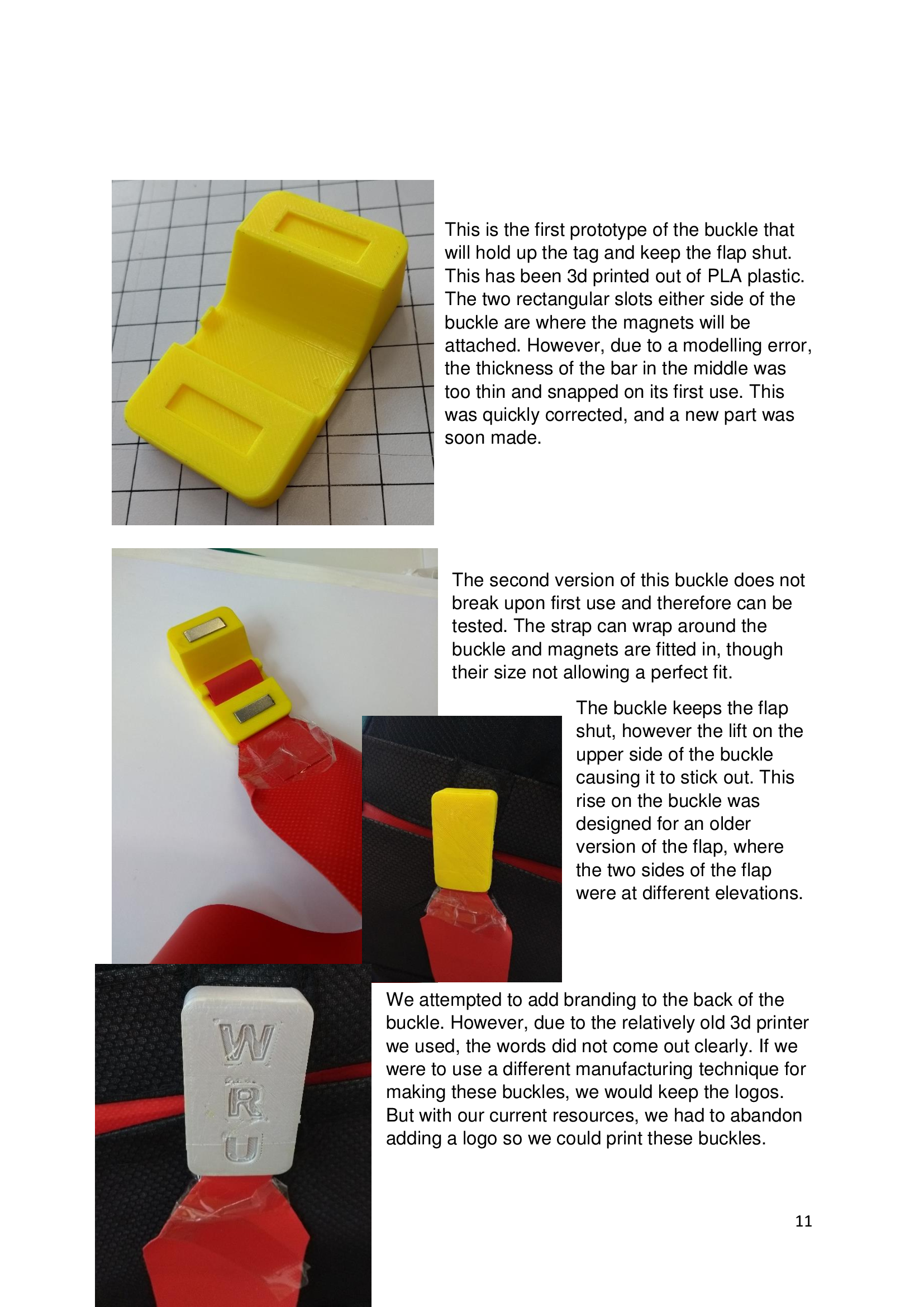
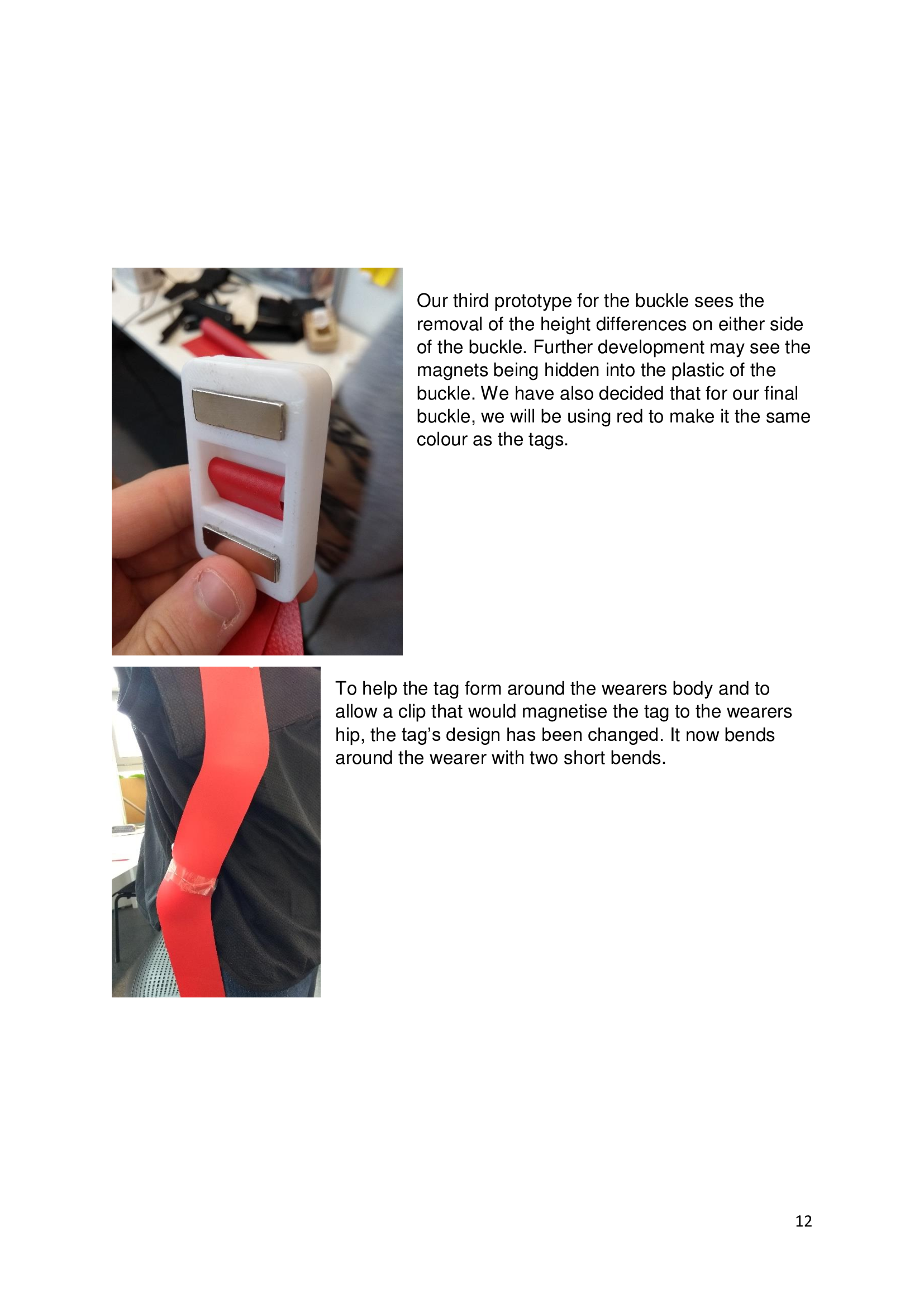

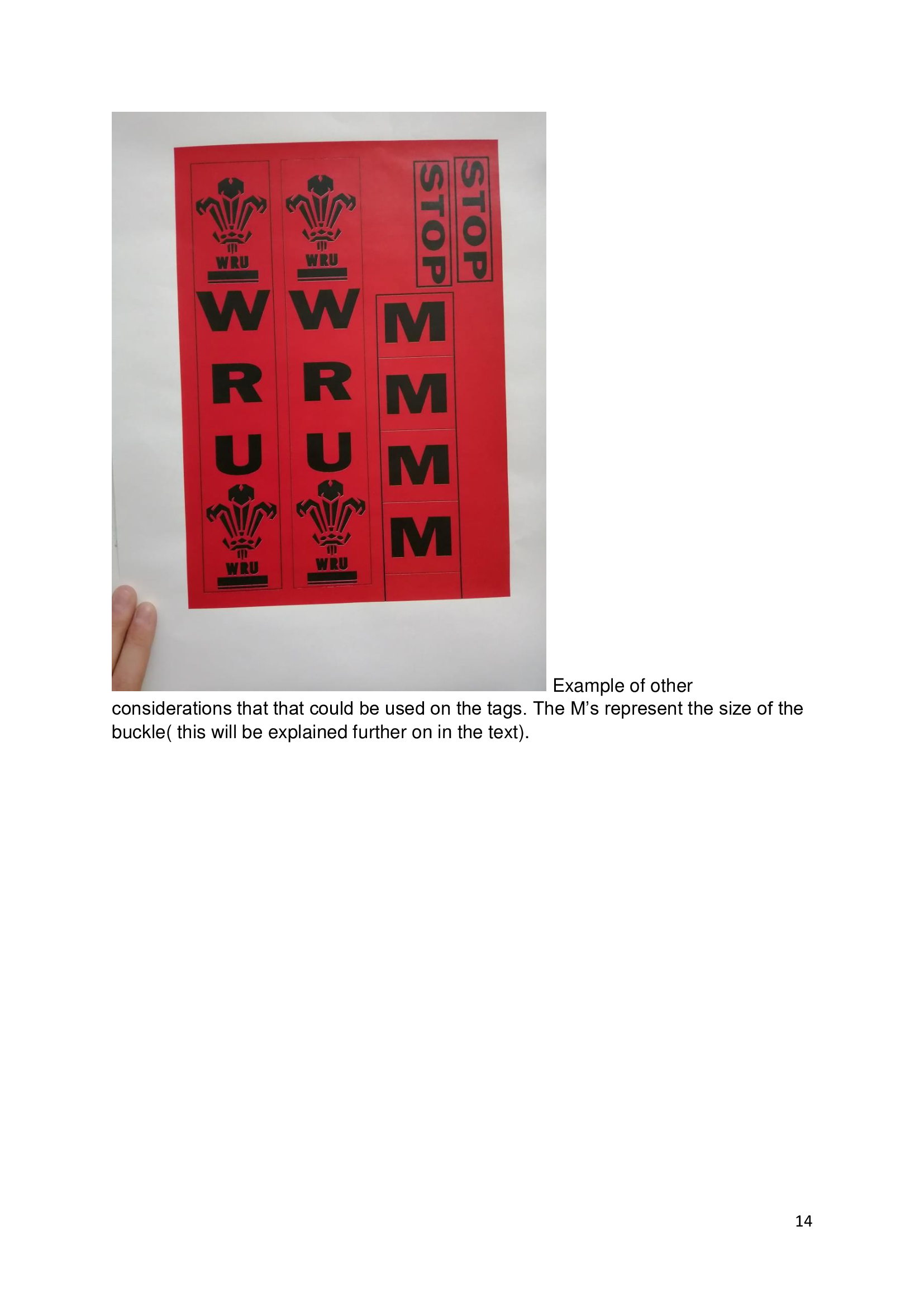

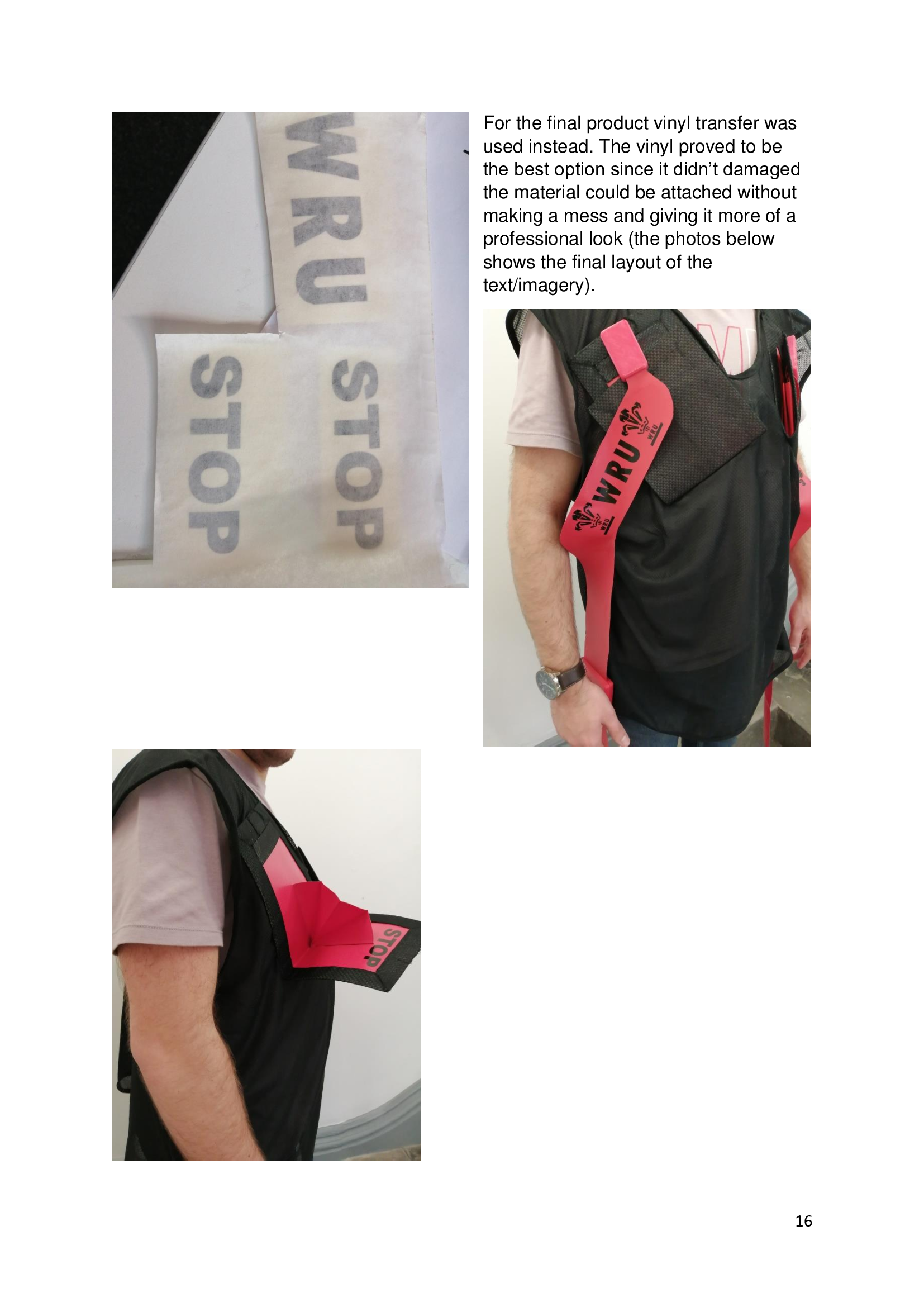
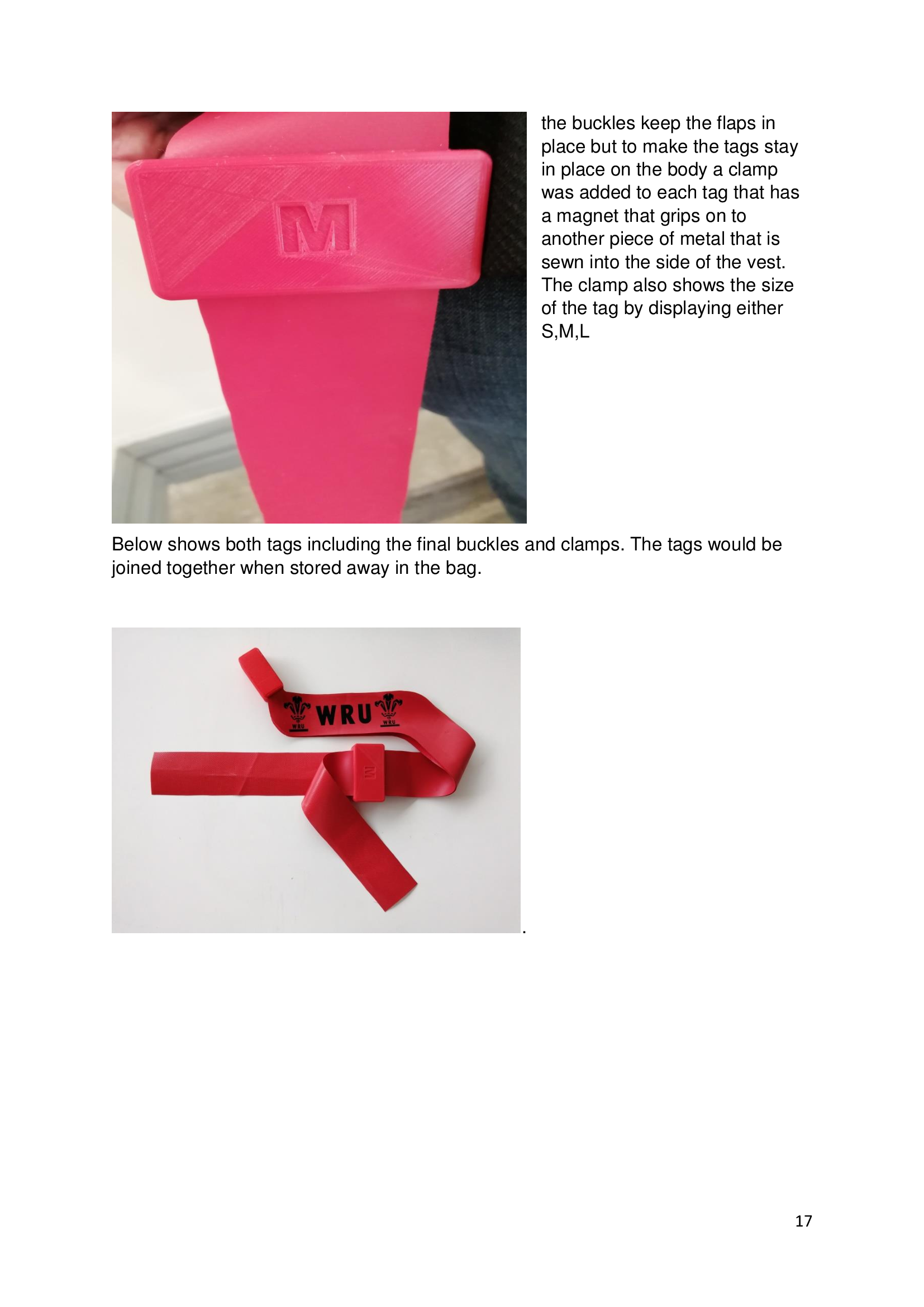

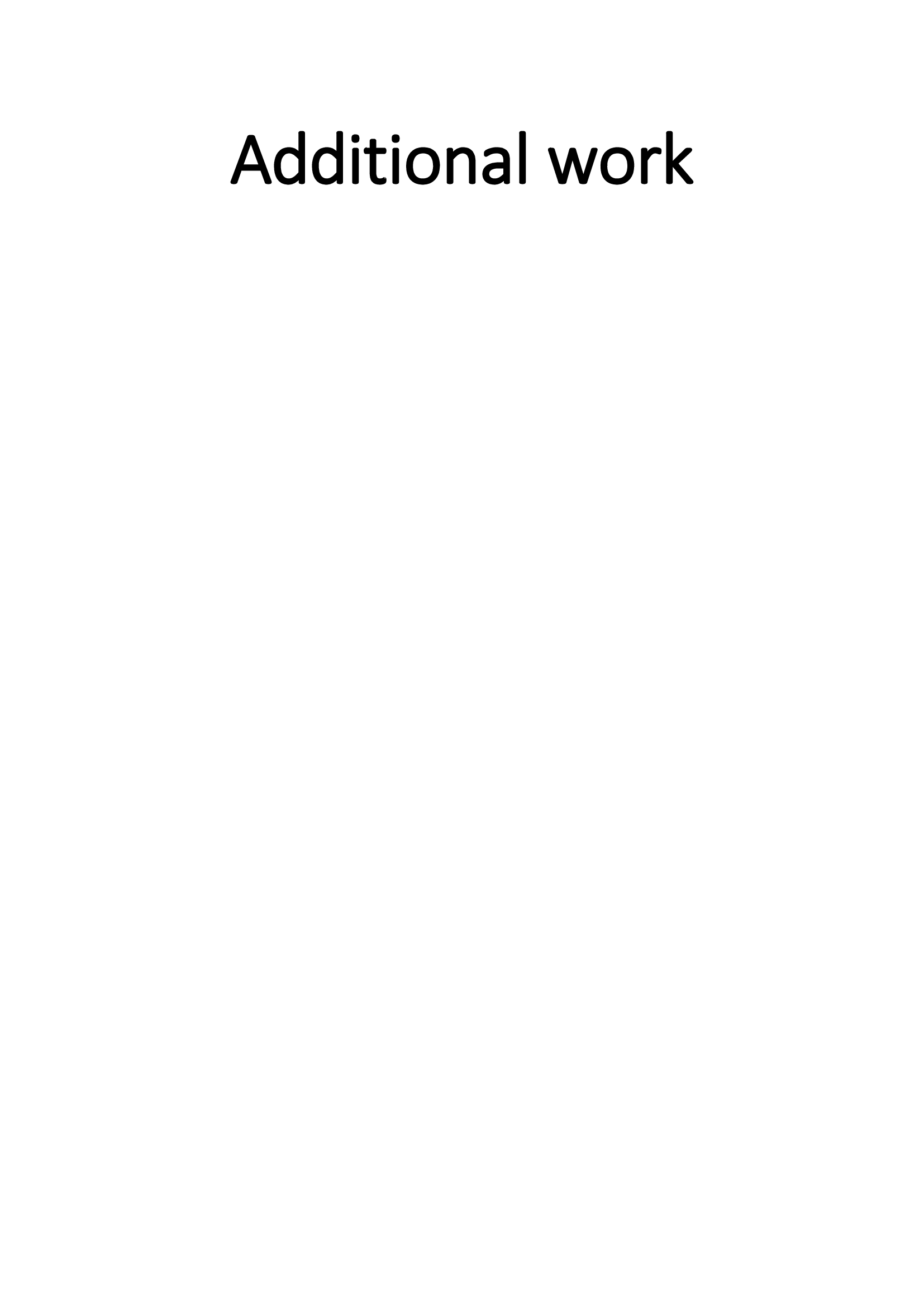
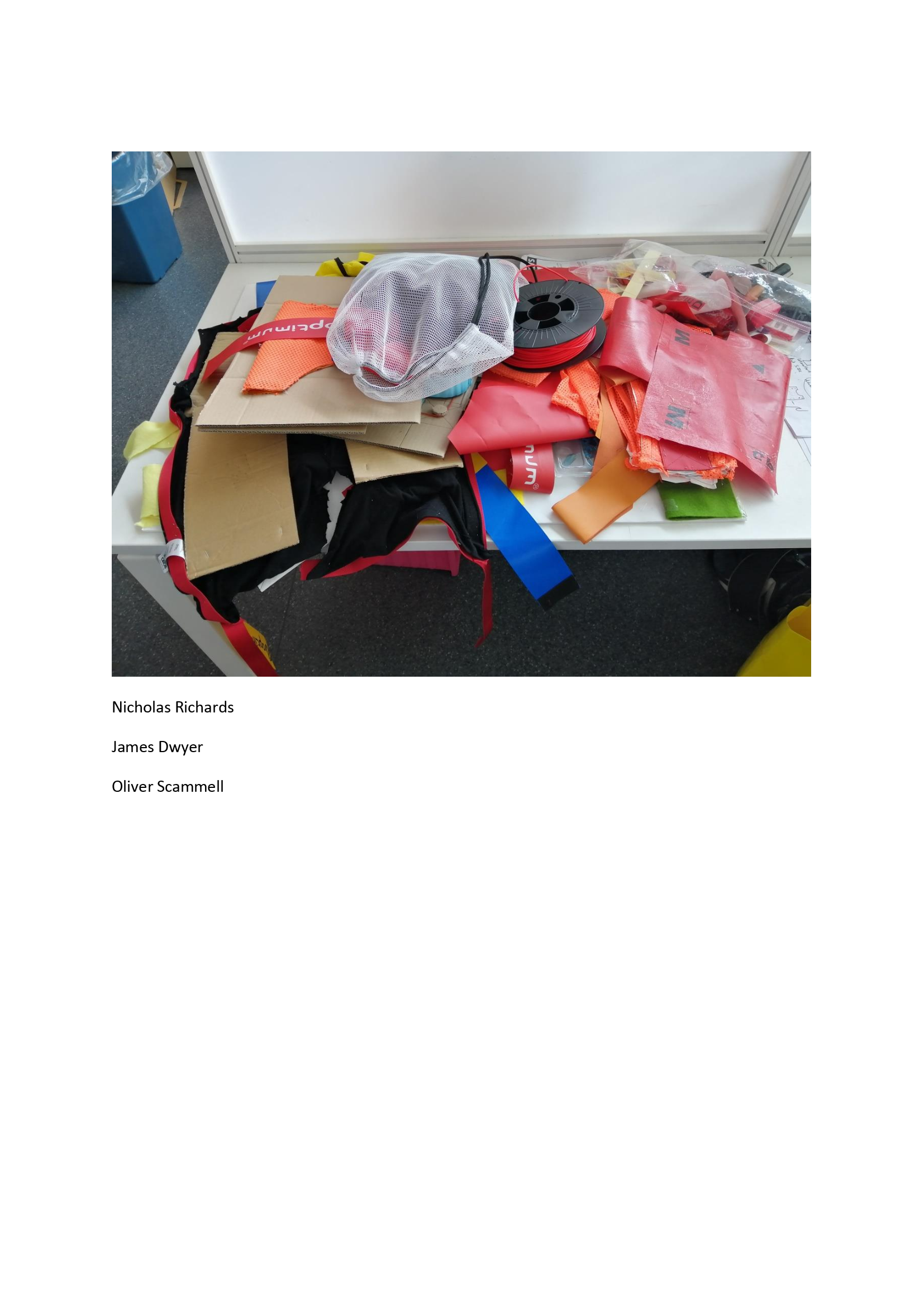
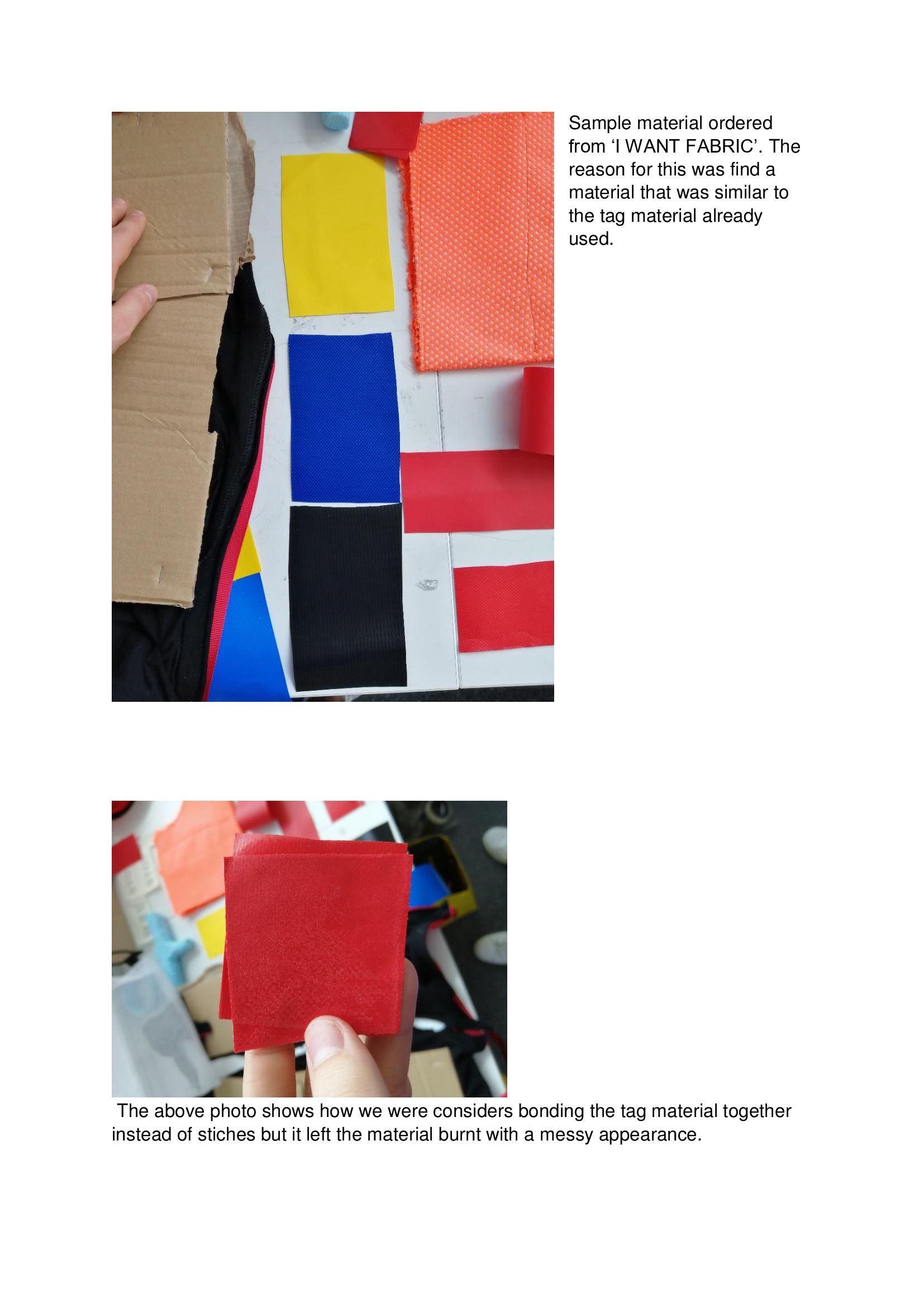
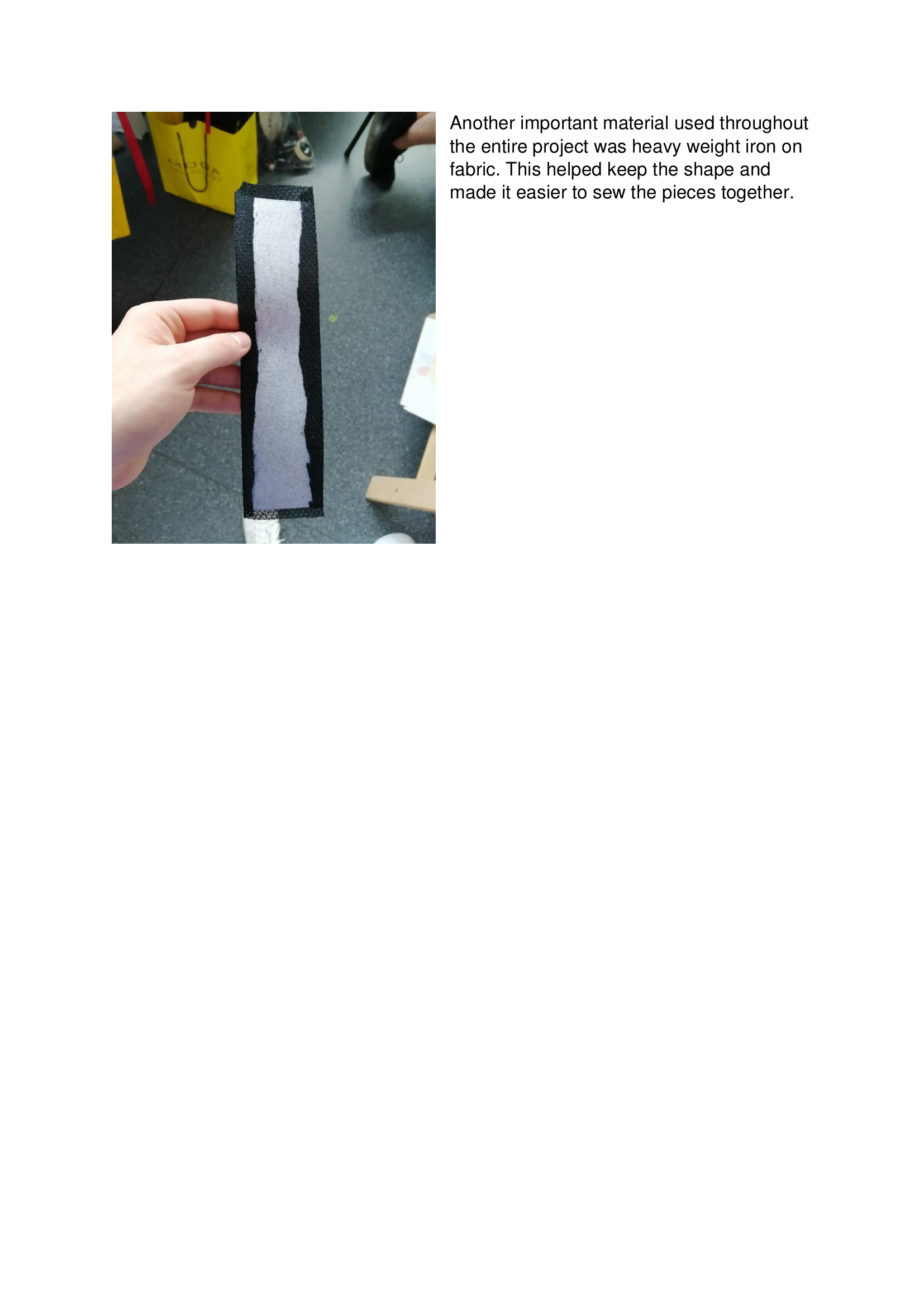
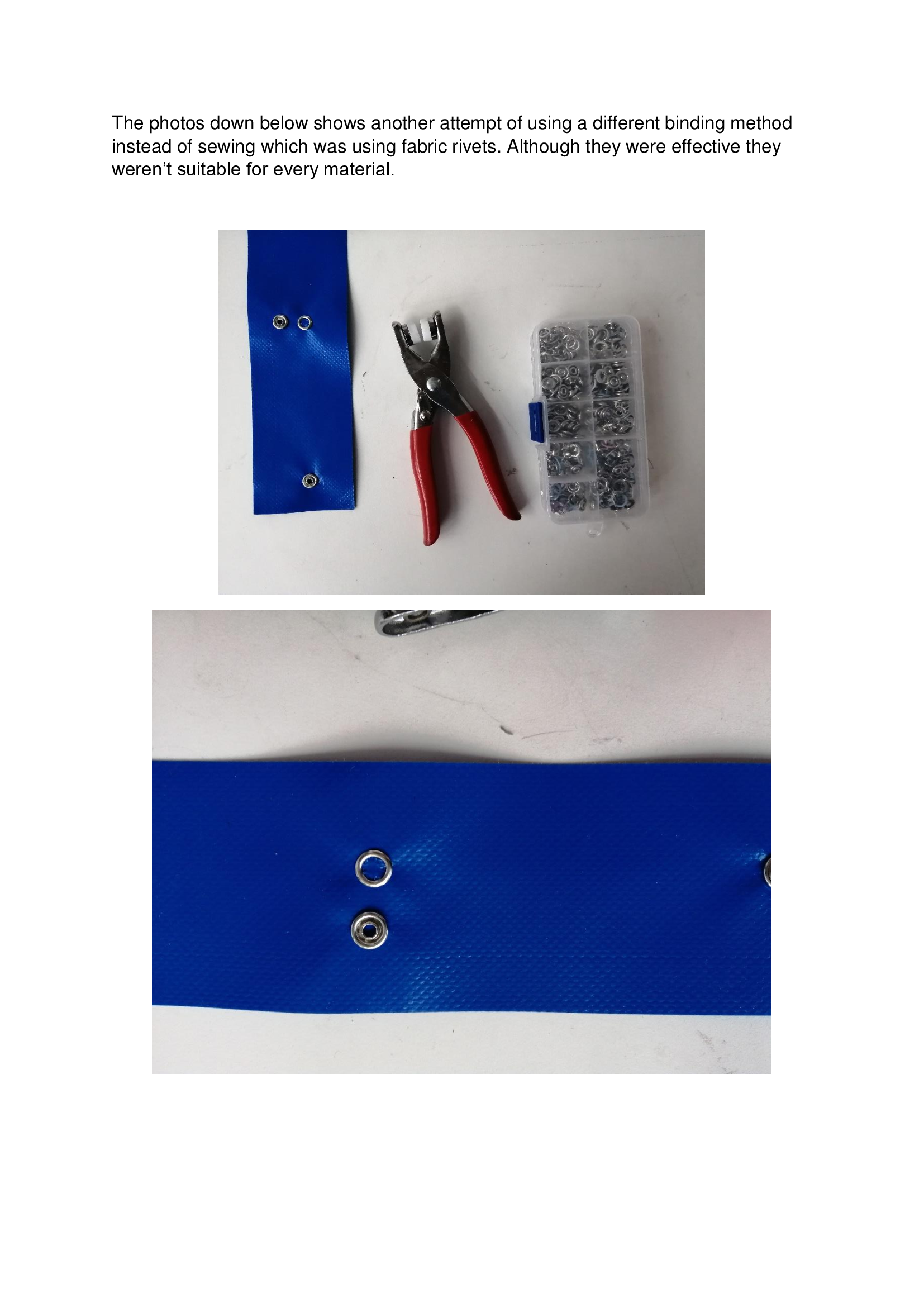
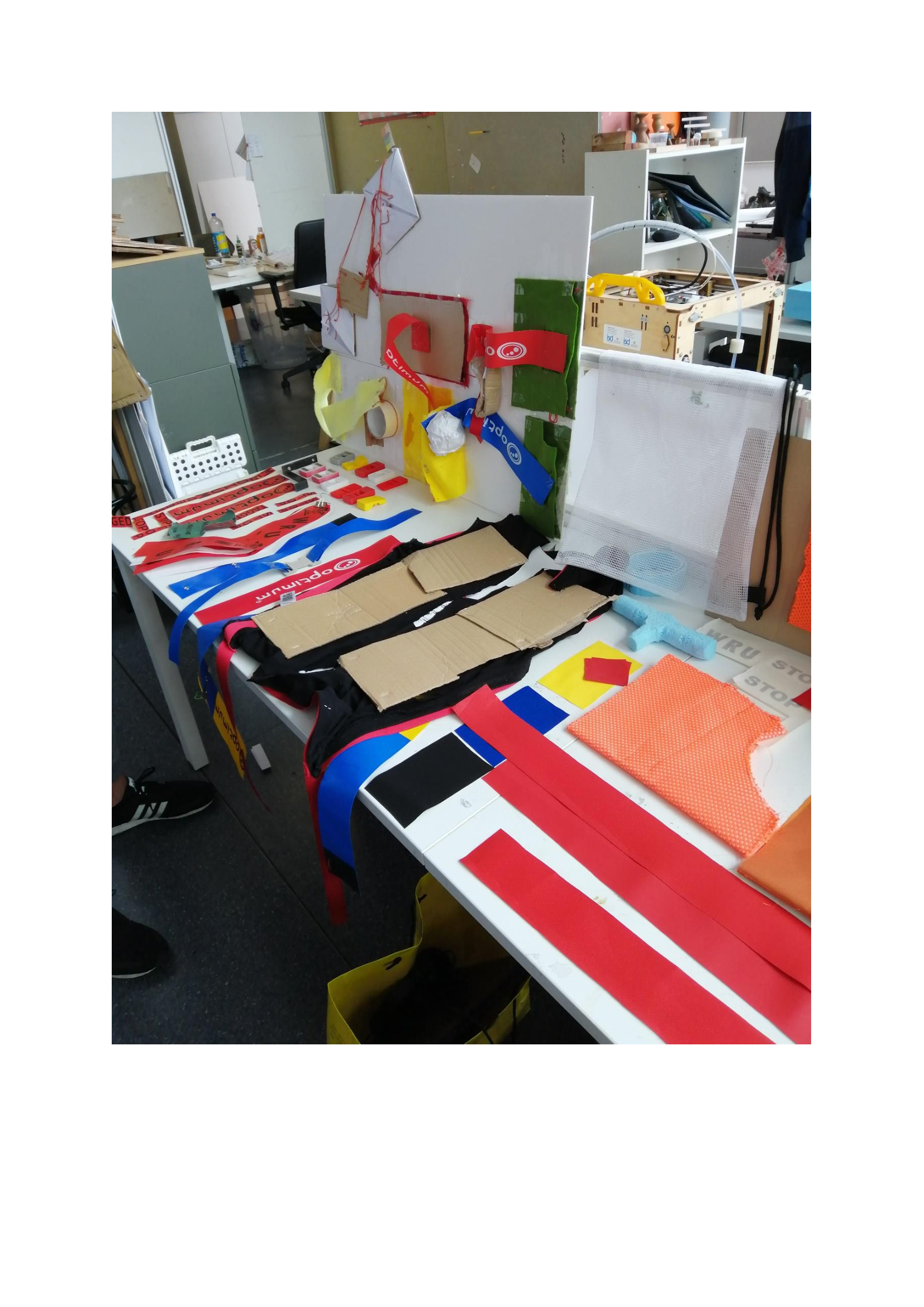
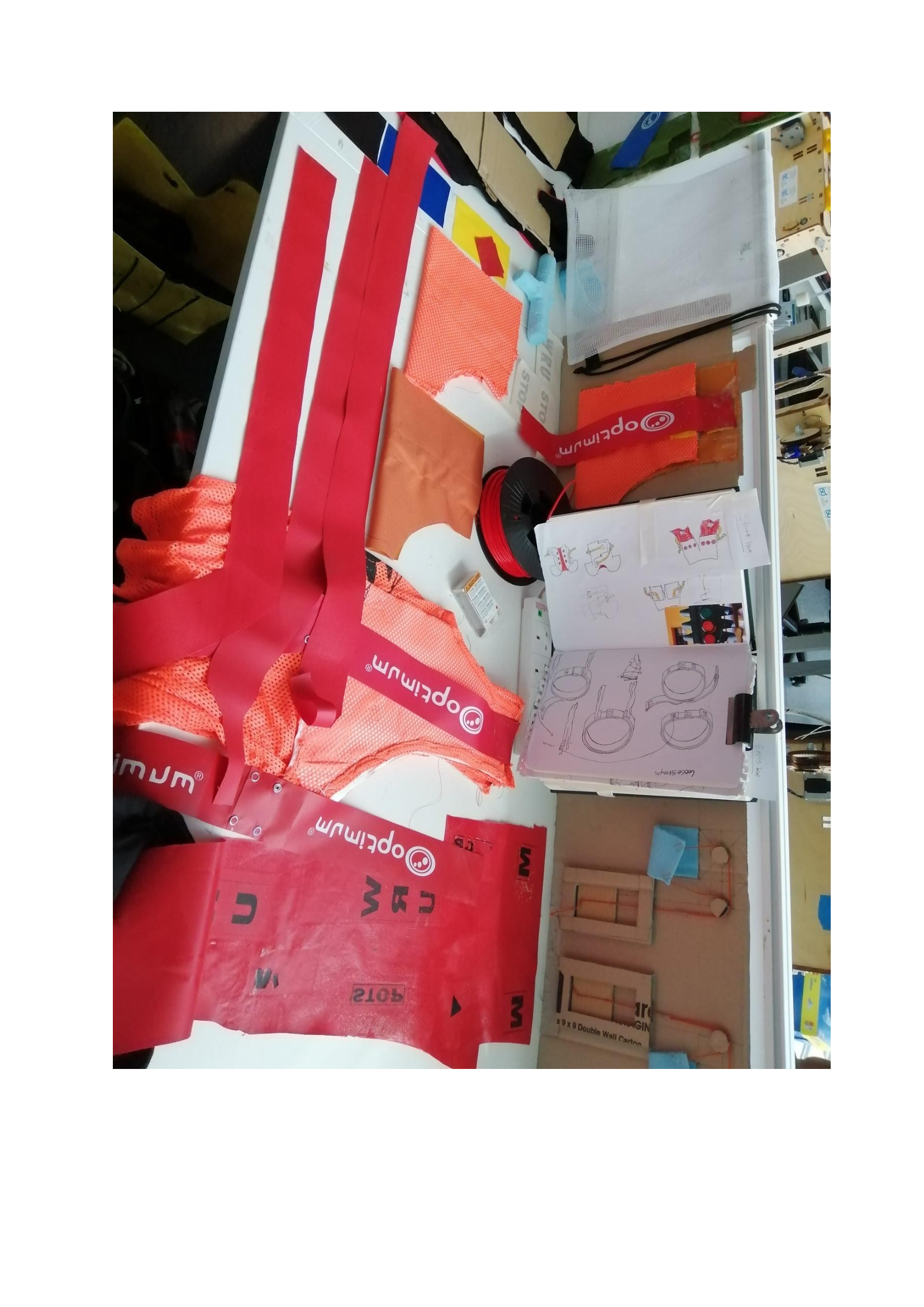

evaluation
Our aim for our product was to provide the user with a visual notification that they’re been tagged as the existing solution doesn’t make this readily apparent. Our product would need to be simple, non-mechanical and non-electrical to avoid issues over maintenance such as repair and charging but still effective to make the player visually aware that they’ve been tagged.
The visual notification would need to be within the line of sight of the ball carrier, making the upper body area the obvious place to display this notification. As a result a vest was deemed the most suitable garment to meet this need. In terms of visual notification we wanted a system that could change shape form and colour to instantly draw the attention of the ball carrier. Settling on the choice of red as it’s universally recognized as the colour of warning, as per the traffic light system. We developed an unfolding flap that reveals the colour which is activated when the tag is removed from the body.
The purpose of the buckle at the top of the tag is to aid the user in resetting the tag to the in-play position. Lower down the tag is a clamp to align the tag to the wearers hip. Located within both the buckle and clamp are neodymium magnets that attach the tag to the vest by attraction to iron strips sewn into the vest.The vest can be reset to the in-play position in 3 simple steps.
When displayed, the open flap will always be red whereas the vest and tags would be available in various colours – As demonstrated. We’ve also included a written instruction of the phrase “Stop” within the flap, that becomes visible when open, to reaffirm the message.
Originally we believed that by using the other colours in the traffic light system we could develop a system of our own on the tag vest that could help the player relocate where the tags are meant to be attached without stress or difficulty. But as you can see the buckles and clamps are the same colour as the tags. The reason for this is that after more research and evaluation we came to the conclusion that if a child was to have sensory issues, too many colours can be over whelming and cause the child to become distracted or confused. To make sure this wasn’t an issue we made an agreement that the best option was to use minimum amount of colours and that is way the buckles clamp and tags are the same colours.
The reason for having metal pieces in the vest instead of magnets for the buckle and clamp to attach to is that. Let’s say you forgot take the magnets out of the pockets when washing the vests. You’ve got a high chance that the magnets are going to stick to the drum of the machine causing the machine to break. But that’s not to say that if you forget to take the metal pieces out there wouldn’t be a problem since the metal could rust and leak on to the garment. Therefore we stuck with using the metal pieces instead since they would cause the least problematic issue and would only become a problem if you repeatedly forget to take the metal pieces out.
With regards to sizing it wouldn’t be a product that is one size fits all. If it was to be one size fits all then it would have to have adjustable features on the vest and the tags, that could take it up a considerate amount of time to make sure that it fits every player and that everything is secure and not louse if in case the child is unable to do this by them self. We addressed this by having 3 sized vests and 3 sized tags. It may seem inconvenient since the tag rugby belts fit most people, but the way we viewed it is that let’s say you’re in the P.E hall you’re the coach you give all the vest and tags out one by one but then you’ve got to go around and make sure it’s all good with the majority of the kids. So wouldn’t it be easier to save time and stress to hand out a vest and a pair of tags that would most likely fit the child just by judging their size as they come up one by one. Also there is also the benefit of knowing that the adjustments won’t come undone during the game. The way to identify the size of the vest is a letter symbol on the collar and on the clamps on the tag there is also a letter symbol.
final prototype

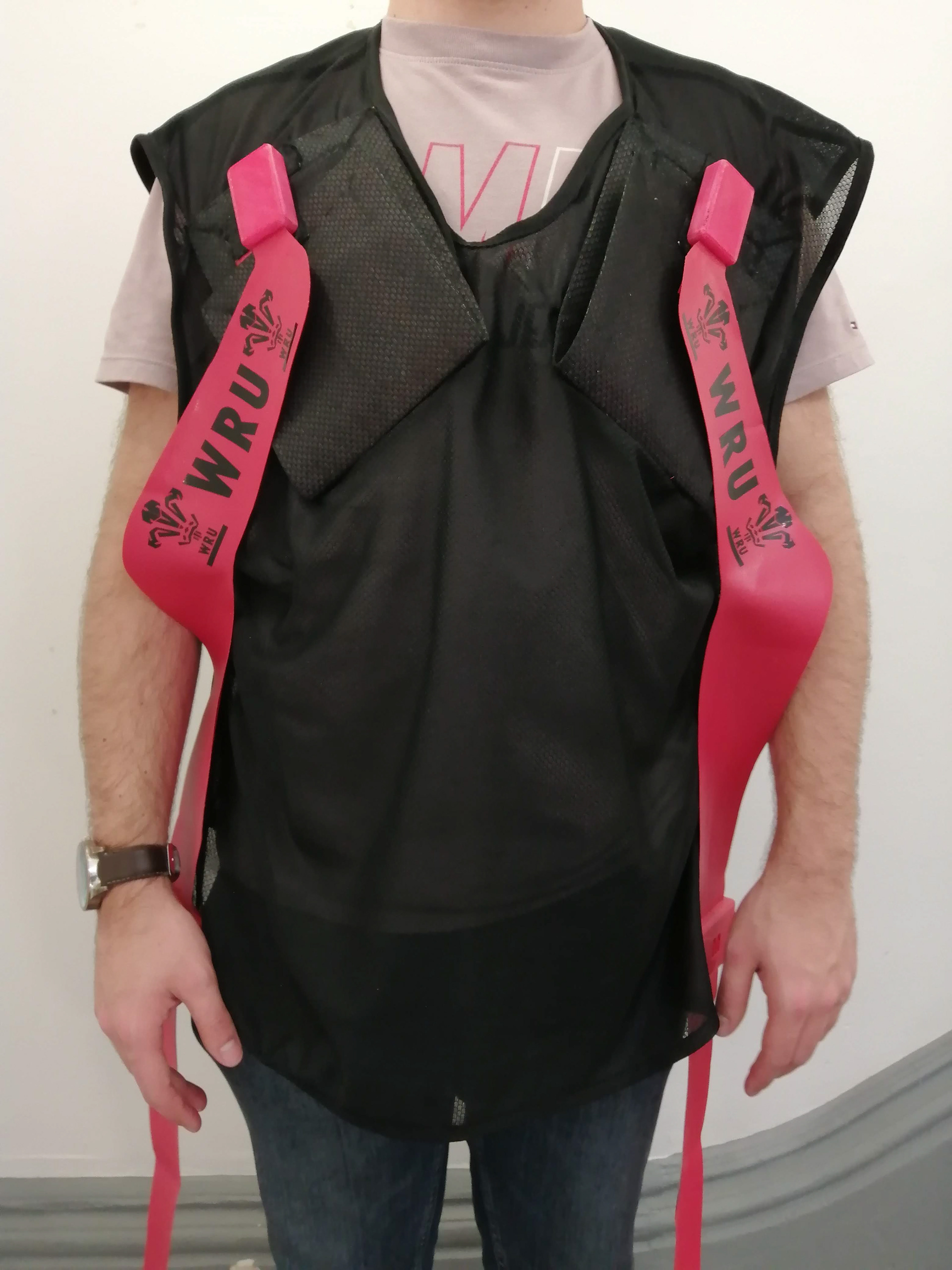
presentation boards